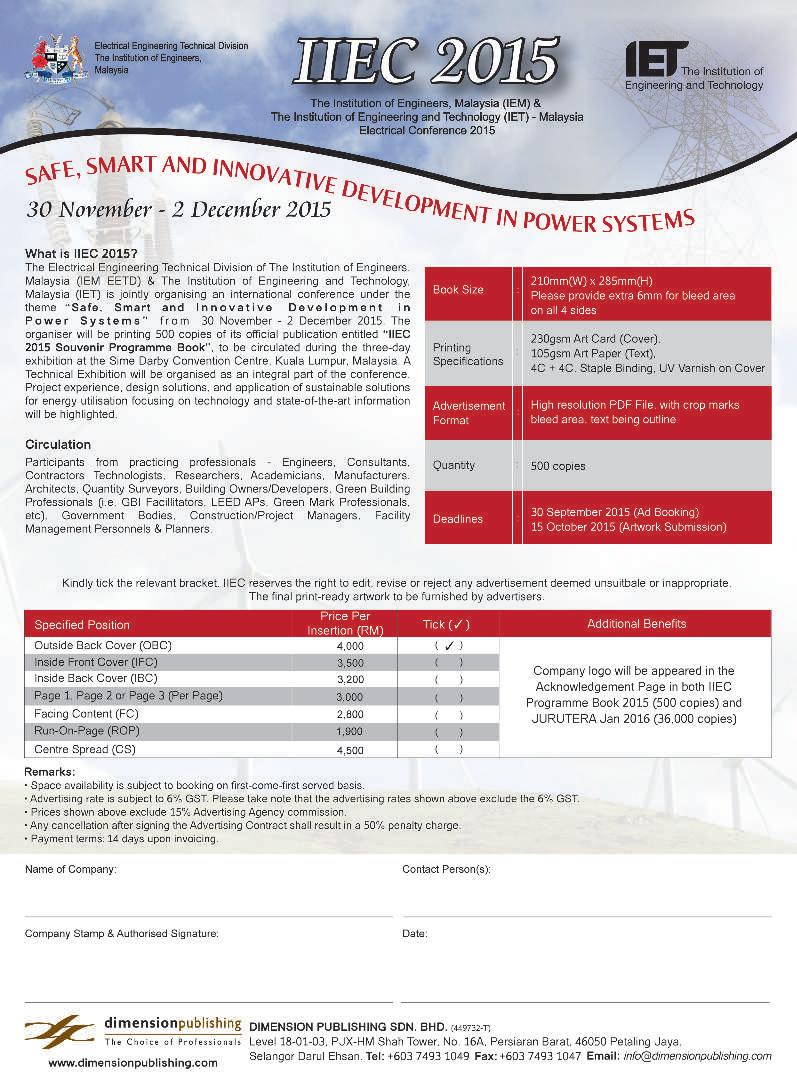THE MONTHLY BULLETIN OF THE INSTITUTION OF ENGINEERS, MALAYSIA
OCTOBER 2015
KDN PP 1050/12/2012 (030192) ISSN 0126-9909

OCTOBER 2015
KDN PP 1050/12/2012 (030192) ISSN 0126-9909

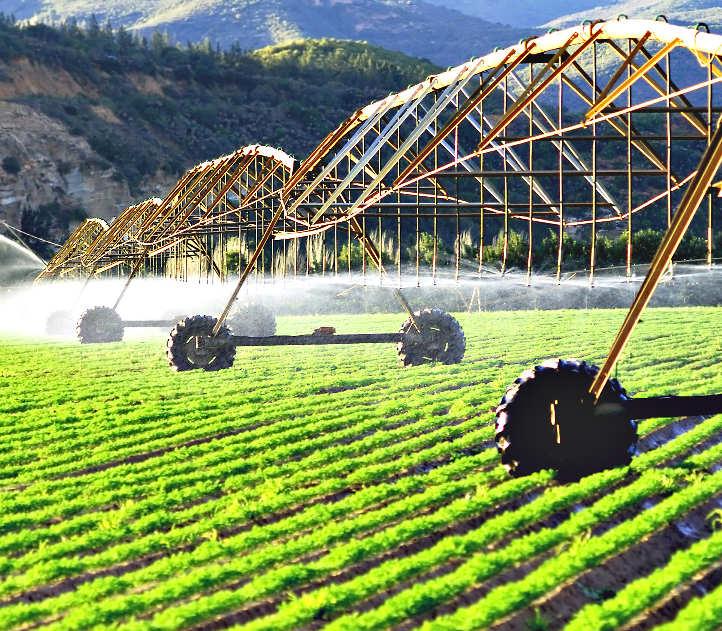
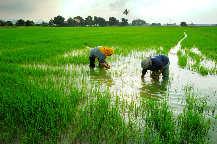
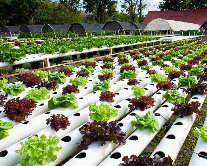

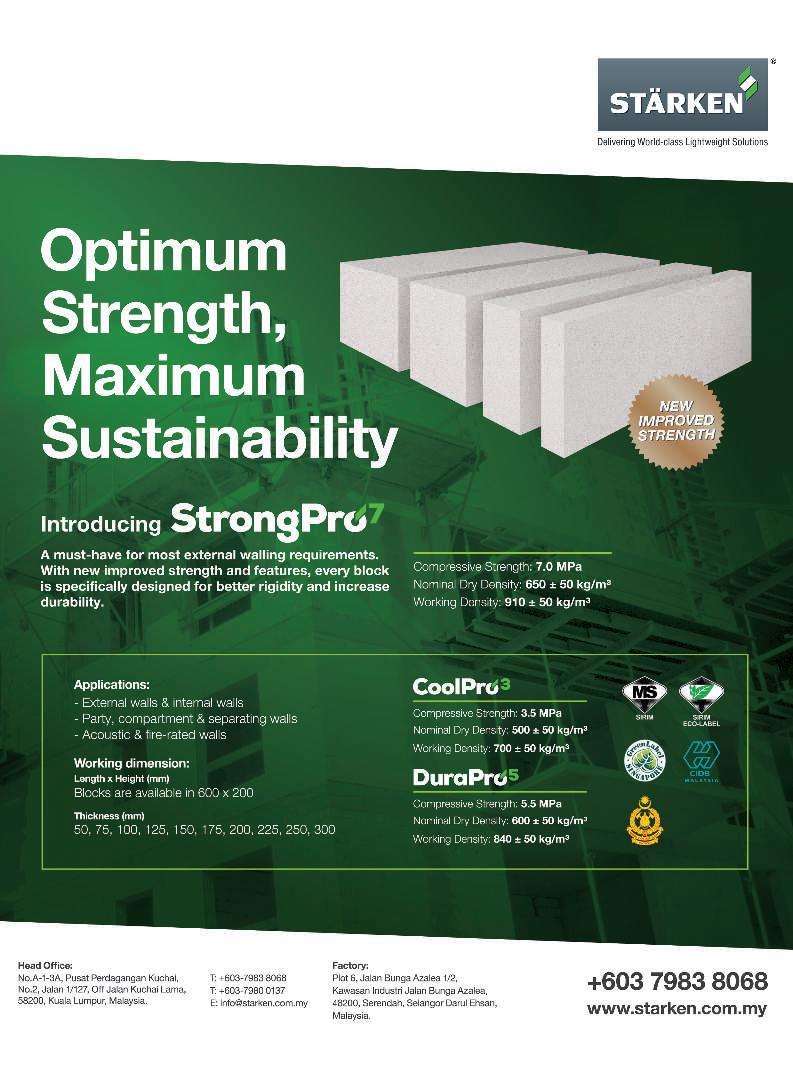
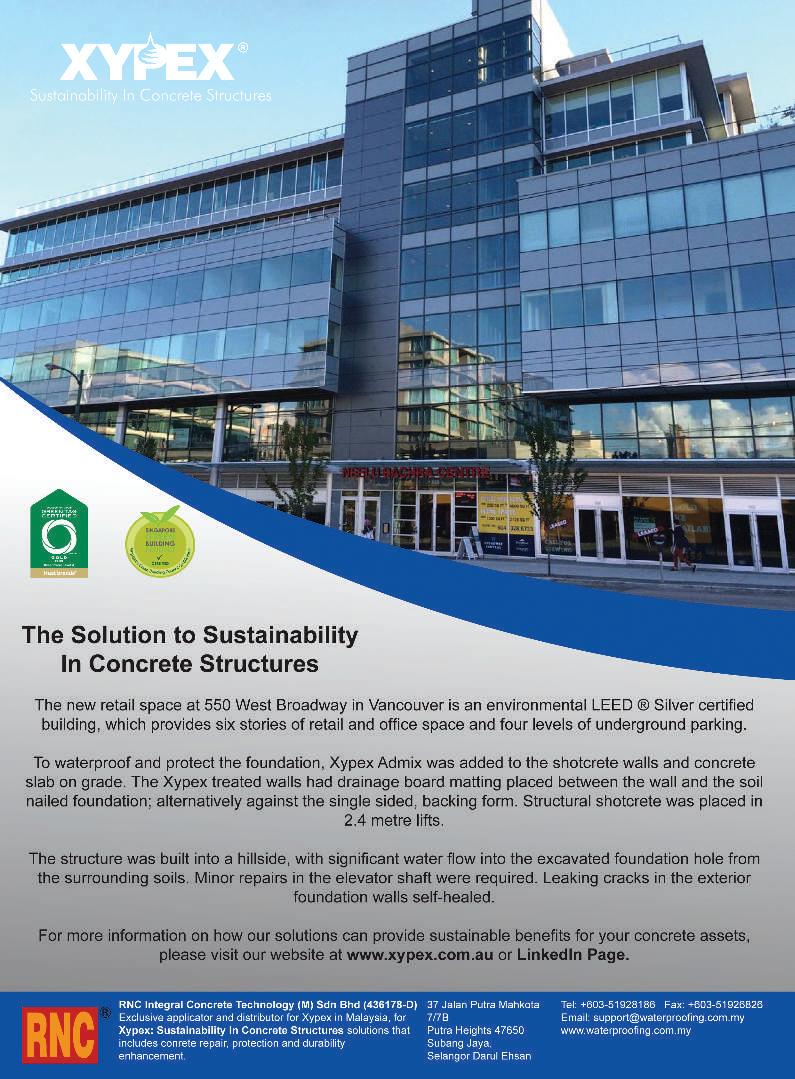
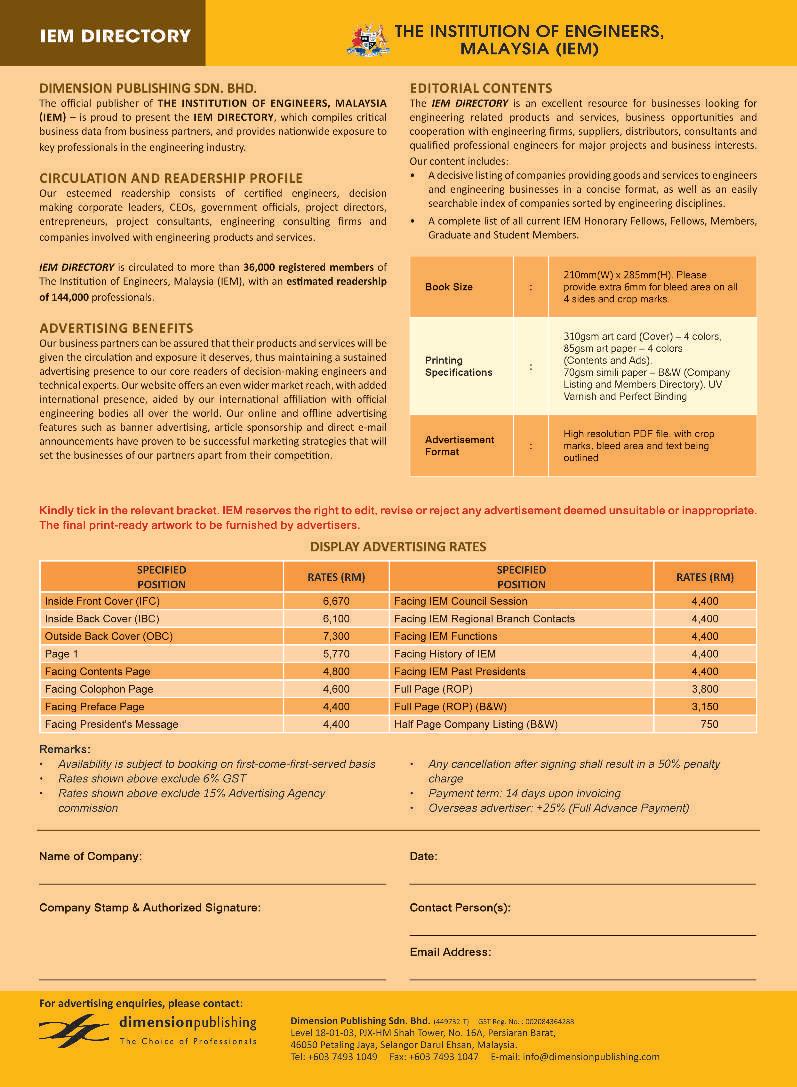

Number 10, October 2015
IEM Registered on 1 May 1959
MAJLIS BAGI SESI 2015/2016 (IEM COUNCIL SESSION 2015/2016)
YANG DIPERTUA / PRESIDENT
Y.Bhg. Dato’ Ir. Lim Chow Hock
TIMBALAN YANG DIPERTUA / DEPUTY PRESIDENT
Ir. Tan Yean Chin
NAIB YANG DIPERTUA / VICE PRESIDENTS
Y.Bhg. Dato’ Ir. Dr Andy Seo Kian Haw, Ir. Lee Weng Onn, Ir. Gopal Narian Kuty, Ir. Prof. Dr Ruslan bin Hassan, Ir. Lai Sze Ching, Ir. Lee Boon Chong, Ir. David Lai Kong Phooi
SETIAUSAHA KEHORMAT / HONORARY SECRETARY
Ir. Yam Teong Sian
BENDAHARI KEHORMAT / HONORARY TREASURER
Ir. Prof. Dr Jefrey Chiang Choong Luin
BEKAS YANG DIPERTUA TERAKHIR / IMMEDIATE PAST PRESIDENT Ir. Choo Kok Beng
BEKAS YANG DIPERTUA / PAST PRESIDENTS
Y.Bhg. Academician Tan Sri Dato’ Ir. (Dr) Hj. Ahmad Zaidee bin Laidin, Y.Bhg. Dato’ Ir. Dr Gue See Sew, Y.Bhg. Academician Dato’ Ir. Prof. Dr Chuah Hean Teik, Ir. Vincent Chen Kim Kieong
WAKIL AWAM / CIVIL REPRESENTATIVE
Ir. Prof. Dr Mohd. Zamin bin Jumaat
WAKIL MEKANIKAL / MECHANICAL REPRESENTATIVE
Ir. Dr Kannan M. Munisamy
WAKIL ELEKTRIK / ELECTRICAL REPRESENTATIVE
Y.Bhg. Dato’ Ir. Ali Askar bin Sher Mohamad
WAKIL STRUKTUR / STRUCTURAL REPRESENTATIVE
Ir. Hooi Wing Chuen
WAKIL KIMIA / CHEMICAL REPRESENTATIVE
Ir. Prof. Dr Thomas Choong Chean Yaw
WAKIL LAIN-LAIN DISPLIN / REPRESENTATIVE TO OTHER DISCIPLINES
Ir. S. Kumar a/l Subramaniam
WAKIL MULTIMEDIA DAN ICT / ICT AND MULTIMEDIA REPRESENTATIVE
Engr. Abdul Fatah bin Mohd. Yaim, M.I.E.M.
AHLI MAJLIS / COUNCIL MEMBERS
Ir. Dr Tan Chee Fai, Ir. Kok Hee Poh, Ir. Tiong Ngo Pu, Ir. Yau Chau Fong, Ir. Teh Piaw Ngi, Ir. Kim Kek Seong, Ir. Chong Chin Meow, Ir. Chin Kuan Hwa, Ir. Assoc. Prof. Dr Vigna Kumaran Ramachandaramurthy, Ir. Lee Cheng Pay, Ir. Ong Ching Loon, Ir. Gary Lim Eng Hwa, Y.Bhg. Dato’ Ir. Noor Azmi bin Jaafar, Ir. Aminuddin bin Mohd Baki, Ir. Mohd Radzi bin Salleh, Ir. Ong Sang Woh, Ir. Mohd Khir bin Muhammad, Ir. Assoc. Prof. Dr Norlida Bini Buniyamin, Y. Bhg. Dato’ Ir. Hanapi bin Mohamad Noor, Ir. Dr Ahmad Anuar bin Othman, Ir. Ishak bin Abdul Rahman, Ir. PE Chong, Ir. Ng Yong Kong, Ir. Tejinder Singh, Ir. Sreedaran a/l Raman, Ir. Roger Wong Chin Weng
AHLI MAJLIS JEMPUTAN / INVITED COUNCIL MEMBERS
Y. Bhg. Datuk Ir. Rosaline Ganendra, Y. Bhg. Dato’ Ir. Abdul Rashid bin Maidin
PENGERUSI CAWANGAN / BRANCH CHAIRMAN
1. Pulau Pinang: Ir. Dr Mui Kai Yin
2. Selatan: Ir. Assoc. Prof. Hayai bini Abdullah
3. Perak: Ir. Lau Win Sang
4. Kedah-Perlis: Ir. Abdullab bin Othman
5. Negeri Sembilan: Ir. Shahrin Amri bin Jahari
6. Kelantan: Ir. Mohd Zaki bin Mat
7. Terengganu: Ir. Hj. Abdullah Zawawi bin Mohd. Nor
8. Melaka: Ir. Nur Fazil Noor Mohamed
9. Sarawak: Ir. Haidel Heli
10. Sabah: Ir. Tan Koh Yon
11. Miri: Ir. Steven Chin Hui Seng
12. Pahang: Y. Bhg. Dato’ Ir. Hj. Abdul Jalil bin Hj. Mohamed
AHLI JAWATANKUASA INFORMASI DAN PENERBITAN / STANDING COMMITTEE ON INFORMATION AND PUBLICATIONS 2015/2016
Pengerusi/Chairman: Ir. Prof. Dr Ruslan Hassan Naib Pengerusi/Vice Chairman: Ir. Mohd. Khir Muhammad Seiausaha/Secretary: Ir. Lau Tai Onn Ketua Pengarang/Chief Editor: Ir. Prof. Dr Ruslan Hassan Pengarang Bulein/Bullein Editor: Ir. Mohd. Khir Muhammad Pengarang Prinsipal Jurnal/Principal Journal Editor: Ir. Prof. Dr Dominic Foo Chwan Yee Pengerusi Perpustakaan/Library Chairman: Ir. C.M.M. Aboobucker Ahli-Ahli/Commitee Members: Y.Bhg. Datuk Ir. Prof. Dr Ow Chee Sheng, Engr. Abdul Fatah bin Mohamed Yaim, M.I.E.M., Ir. Dr Kannan a/l M. Munisamy, Ir. Chin Mee Poon, Ir. Yee Thien Seng, Ir. Ong Guan Hock, Ir. Dr Wang Hong Kok, Ir. Dr Oh Seong Por, Ir. Dr Aminuddin Mohd Baki, Ir. Tejinder Singh
LEMBAGA PENGARANG/EDITORIAL BOARD 2015/2016 Ketua Pengarang/Chief Editor: Ir. Prof. Dr Ruslan Hassan Pengarang Bulein/Bullein Editor: Ir. Mohd. Khir Muhammad Pengarang Jurnal/Journal Editor: Ir. Prof. Dr Dominic Foo Chwan Yee
Ahli-ahli/Commitee Members: Ir. Ong Guan Hock, Ir. Lau Tai Onn, Ir. Yee Thien Seng, Ir. Dr Wang Hong Kok
Secretariats: Janet Lim, May Lee
COVER NOTE Agriculture: Water Quality and Waste Management
Practices The Key to
FEATURE ARTICLES
Insight into Lignocellulosic Biodegradation and Its Potential for Enzyme Production ..............12
Sediment Transport : Study Evaluation of Proposed Causeway in Tanjung Manis Port, Sarawak, for Industrial and Aquaculture Development ......................................................16
Waste Management: Value-Added Products From Oil Palm Empty Fruit Bunch (EFB) After Treatment ...............................24
SAFE TEA TIME
3As to Gaining Ownership 31

IEM Fundamentals of Engineering Examinations (FEE) 40 - 41
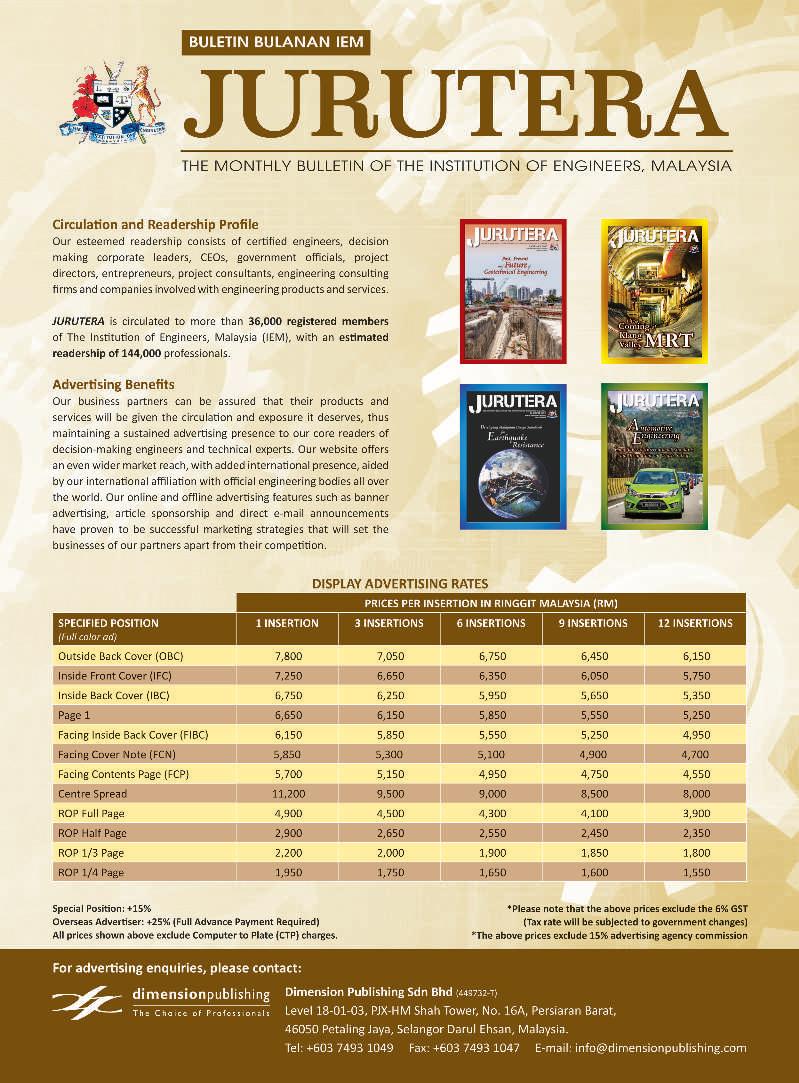
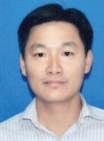
By Ir. Yong Hong Liang
Ir. Yong Hong Liang graduated from Universiti Putra Malaysia with Bachelor Engineering (Agricultural) and Master Science (Soil & Water Engineering). He has over 15 years of experience in development of oil palm plantation and rural area in Malaysia and Indonesia. He is the Head of Engineering of TSH Resources Berhad. Currently, he is the Chairman of Agricultural and Food Engineering Technical Division, IEM.
Agriculture is the single largest user of fresh water. It is also a major cause of the degradation of surface and ground water quality. Aquaculture is also recognised as a cause of environment ecosystem damage.
Expert say that, in the next century, pollution can no longer be remedied by dilution and freshwater quality will become the principal limitation for sustainable development. According to Food & Agriculture Organisation (FAO) of the United Nations, this will mean serious effects such as a decline in sustainable food resources and an escalating cost of remediation that exceeds economic benefits.
Agriculture pollution has a huge impact on our health, so it is vital to manage waste. On farms, this is often overlooked because it is not seen as a part of the actual farm operations. Improper management of agriculture waste is contributing towards climate change as well as water and soil contamination.
Globally, 140 billion tonnes of biomass are generated annually from agriculture, including oil palm empty fruit bunch (EFB), coconut husk, sugarcane bagasse, etc. But this can be converted to energy and raw materials to replace fossil fuel, reduce emission of greenhouse gases and provide renewable energy in developing countries.
Biomasswastehashugepotentialforlarge-scaleindustriesandcommunitylevel enterprises. As the debate on food vs fuel intensifies, biomass can offer extra income to farmers without compromising on the production of food and non-food crops.
DIMENSION PUBLISHING SDN. BHD. (449732-T)
Level 18-01-03, PJX-HM Shah Tower, No. 16A, Persiaran Barat, 46050 Petaling Jaya, Selangor Darul Ehsan, Malaysia. Tel: +(603) 7493 1049 Fax: +(603) 7493 1047 E-mail: info@dimensionpublishing.com Website: www.dimensionpublishing.com
For adverisement placements and subscripions, please contact: DIMENSION PUBLISHING SDN. BHD. (449732-T) at +(603) 7493 1049, or E-mail: info@dimensionpublishing.com
Subscripion Department E-mail: info@dimensionpublishing.com
Printed by
HOFFSET PRINTING SDN. BHD. (667106-V) No. 1, Jalan TPK 1/6, Taman Perindustrian Kinrara, 47180 Puchong, Selangor Darul Ehsan, Malaysia. Tel: +(603) 8075 7222 Fax: +(603) 8075 7333
Mailer
PERFECT MAIL SERVICES (648839-P)
14 Jalan TSB 2, Taman Perindustrian Sungai Buloh, Sungai Buloh, Selangor Darul Ehsan, Malaysia. Tel: +(603) 6156 5288
JURUTERA MONTHLY CIRCULATION: 36,000 COPIES
Submission or placement of aricles in JURUTERA could be made to the:Chief Editor
THE INSTITUTION OF ENGINEERS, MALAYSIA (IEM) Bangunan Ingenieur, Lots 60 & 62, Jalan 52/4, P.O. Box 223 (Jalan Sultan), 46720 Petaling Jaya, Selangor. Tel: +(603) 7968 4001/4002 Fax: +(603) 7957 7678
E-mail: pub@iem.org.my or sec@iem.org.my IEM Website: htp://www.myiem.org.my © 2015, The Insituion of Engineers, Malaysia (IEM) and Dimension Publishing Sdn. Bhd.
Chairman ROBERT MEBRUER CEO/Publisher PATRICK LEUNG
General Manager SHIRLEY THAM shirley@dimensionpublishing.com
Head of Markeing & Business Development JOSEPH HOW joseph@dimensionpublishing.com
Editor TAN BEE HONG bee@dimensionpublishing.com
Contribuing Writers ARMAN PFORDTEN, PUTRI ZANINA & ZOE PHOON pfordten@dimensionpublishing.com putri@dimensionpublishing.com zoe@dimensionpublishing.com
Senior Graphic Designer SUMATHI MANOKARAN sumathi@dimensionpublishing.com
Graphic Designer NABEELA AHMAD beela@dimensionpublishing.com
Adverising Consultants ABDUL AZIM BIN SHAARI & THAM CHOON KIT azim@dimensionpublishing.com ckit@dimensionpublishing.com
Accounts cum Admin Execuive YONG YEN YIN yenyin@dimensionpublishing.com
PUBLICATION DISCLAIMER
The publicaion has been compiled by both IEM and Dimension with great care and they disclaimanydutytoinvesigateanyproducts,process,services,designsandthelikewhichmay be described in this publicaion. The appearance of any informaion in this publicaion does notnecessarilyconsituteendorsement by IEMand Dimension. Thereisnoguaranteethat the informaioninthis publicaionisfreefromerrors.IEMandDimensiondonotnecessarilyagree with the statement or the opinion expresssed in this publicaion.
COPYRIGHT
JURUTERA Bullein of IEM is the oicial magazine of The Insituion of Engineers, Malaysia (IEM) and
by Zoe Phoon
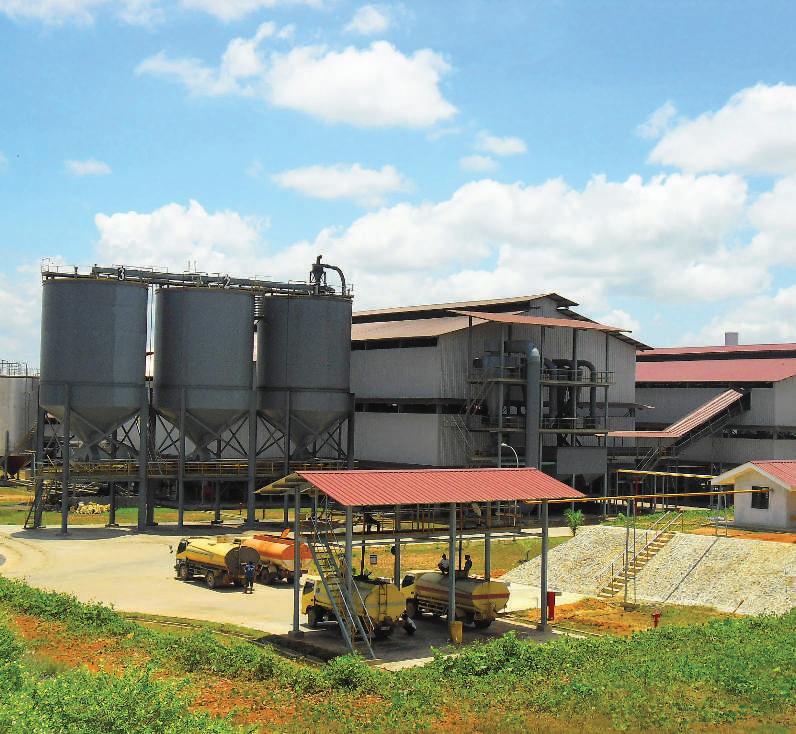
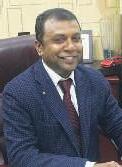
Ir. Kumar Subramanian is currently a council member of IEM for 2013-2016 session and was the Chairperson for Agricultural and Food Engineering Technical Division (AFETD) for 2007-2010 session. He is the Managing Director of SGT Konsult Sdn. Bhd., an engineering consultancy irm dealing with design and implementation of agro-based process plants.
Ir. Kumar has more than 20 years of experience in implementing palm oil mills, kernel crushing plants, bio-gas and biomass power plants, waste water treatment plants and compost plants. He has been involved in palm oil industry since 1993 and been exposed to direct ield projects in Malaysia, Indonesia, India, Papua New Guinea, Africa and South America. His published works are mostly related to palm oil plant technology, waste treatment systems guided by green technology solutions. He also serves as an advisory panel member for engineering faculties of University Putra Malaysia (UPM), Universiti Malaysia Perlis (UniMAP) and The University of Nottingham Malaysia Campus. JURUTERA recently speaks to Ir. Kumar on issues related to palm oil industry.

T
o protect the palm oil industry, agricultural engineer Ir. Kumar Subramaniam says all those involved should be fully committed to protecting the environment.
Agriculture is one of the country’s key economic sectors providing rural employment and palm oil produced from oil palm is among the major contributors to the national economy.
However, oil palm cultivation gives rise to some environmental concerns. In rural areas, for instance, rivers are often contaminated with chemicals from agricultural activities. One of the often-asked questions is whether small-scale farmers or big planters have done enough to prevent surface run-off arising from chemical fertilisers and herbicides applications, to the adjacent waterways.
According to Ir. Kumar Subramaniam, farmers and planters can do more to address the actual problem of surface run-off as incidents of water contamination and severe water source pollutions are still issues that need to be overcome.
“A lot needs to be done. Education for the farmers is inadequate. Knowledge on the negative effects of improper applications of chemical fertilisers needs to be improved. Control measures to carry out sustainable agriculture activities to improve production and protect the environment need to be emphasised,” said Ir. Kumar.
He said the run-off may end up in the sea or a water catchment area. When this happens, water quality will be seriously affected and the water will not be fit for human consumption downstream. It will also affect coral areas off the coast. With the increase in aquaculture activities in the country, water quality has become a key aspect for the growth of the industry.
Ir.Kumarnotedthatgovernmentagencies such as the Department of Agriculture and the Department of Irrigation & Drainage do provide technical consultancy services but the problem is the lack of awareness and the dissemination of information to farmers, in particular, the cash crop growers with oil palm estates of less than 20 acres.
On the other hand, big plantation companies which own at least a few thousand acres each, have their standard operating procedures (SOPs) for dealing with
surface run-off and water contamination. In addition to the SOPs, they also have to comply with the Round table on Sustainable Palm Oil (RSPO) principles and criteria relating to good agricultural production practices as well as waste management such as zero burning at the estates and methane capture at the palm oil mills.
Ir. Kumar said the main objective of RSPO is sustainable palm oil production. The RSPO principles and criteria are summarised and listed below:
• Principle 1: Commitment to transparency – Criteria 1.1 and 1.2 touch on providing adequateinformationfordecisionmaking and public assessment.
• Principle 2: Compliance with applicable laws and regulations – Criteria 2.1 to 2.3 touch on compliance with local, national and international laws and regulations as well as on right on use the land.
• Principle 3: Commitment to long-term economic and financial viability –Criterion 3.1 touches on management plan to economic and financial viability.
• Principle 4: Use of appropriate best practices by growers and millers –Criteria 4.1 to 4.8 touch on the operating procedures to maintain soil fertility, minimise soil erosion, maintain quality of surface and ground water, control of pests, diseases, weeds and the proper use of agrochemicals that ensure the health andsafetyofallstaff,workers,smallholders and contractors.
• Principle 5: Environmental responsibility and conservation of natural resources and biodiversity – Criteria 5.1 to 5.2 touch on action plans by plantation and mill management that mitigate the negative impactsonendangeredspecies.Criteria5.3 to 5.6 touch on reducing wastes, recycling wastes, re-using waste and disposing waste inaresponsiblemannerincludingreduction of pollution and greenhouse gases emissions and the conversion of the wastes into renewable energy.

• Principle 6: Responsible consideration of employees and of individuals and communities affected by growers and mills – Criteria 6.1 to 6.6 touch on plantation and mill management, on communication and consultation, on complaints and grievances, on compensation and others.
• Principle7:Responsibledevelopmentofnewplantings
– Criteria 7.1 to 7.7 touch on social and environmental impact assessment studies, on proper acquisitions of suitable lands, on zero burning in land clearing, etc.
• Principle 8: Commitment to continuous improvement in key areas of activity – Criterion 8.1 calls on the growers and millers to regularly monitor and review their activities for continuous improvement in key operations.
So, unlike the big plantation companies which already have stringent systems in place to protect surface run-off and provide sustainable cultivation, it is the smallholders who need greater exposure and to be made more aware of the impact of agricultural activities on water quality, said Ir Kumar.
In terms of education, he said the Malaysian Palm Oil Board (MPOB) has come up with many programmes for smallholders but such programmes need to be enhanced and must reach the target groups. He suggested more information dissemination through radio and TV programmes and articles in newspapers to the small farmers.

He said what big plantation companies have been doingcanbeeasilymeasured,withincreasedoutputand much less pollution incidents recorded. For example, they willconsiderthevariousRSPOcriteriaandguidelinesbefore applying fertilisers to oil palms. However, smallholders will not carry out the activities with similar stringent guidelines. It is also additional cost to smallholders in the beginning.
The RSPO organisation is solely for palm oil producers. When the smallholders carry out planting activities with proper RSPO guidelines, clean water and less pollution can be achieved in a sustainable manner.
Under the RSPO as summarised earlier, he said big plantationcompaniesaresubjecttorequiredstandardsin waste management methods and discharge. As a result, environmental protection has been enhanced for sure. For example, 10 years ago, the palm oil mill effluent (POME) final discharge quality was 100ppm (parts per million) for BOD (Biological Oxygen Demand). Today, it is below 20ppm and there is no direct discharge allowed into the water course.
Maintaining good agricultural practices together with good engineering practices are key factors that will ensure water resources and water quality are maintained or enhanced.
by Ir. Kumar Subramanian
The final treated effluent is to be used for land irrigation, to reduce the volume of discharge to water course and reducing BOD impacts on water quality, he said, crediting the Department of Environment (DOE) for coming up with farsighted environment protection policies.
“In a nutshell, the waste treatment methods have improved a lot and protection of the environment is


Commenting on the utilisation of biomass and biogas for power generation, Ir. Kumar said the biogas/biomass energy sector has emerged as one of the top sectors benefiting from RSPO. Many companies have ventured into generation of electrical power from biomass.
The recent focus in the industry is on biogas capture and utilisation. The captured biogas is used as boiler fuel, replacing mesocarp fibres and kernel shells, which can be sold as industrial solid fuels.
The captured biogas can also be used in gas engines andgasturbinesforelectricalpowergeneration.Arecent practice is to add the EFB (empty fruit bunch) biomass from palm oil mills to the biogas plant to produce more methane, resulting in increased biogas production. The remainder of the EFB, upon completion of the process, is then transferred to the plantations as a bio-organic soil enhancer.
being given top priority. Biological/microbes methods are being used in waste water management, methane gas enhancement and the sulphur removal treatment process. This shows the commitment from the industry,” he added.
He said smallholders should be encouraged and given incentives to implement the RSPO principles and criteria in order for oil palm plantation activities to be carried out on a long-term sustainability basis. Otherwise, the entire production chain will be affected as the RSPO guidelines start from land clearing itself (RSPO Principle 7) until delivery of final product.
“The other area of concern is open burning as practised by the less educated sector of the industry. This largely contributes to the annual haze phenomenon in this region. The blame game will not help the situation but good education and exposure on the ground, provided to the small section of the non-complying members, will help greatly. Losses are great due to haze but we shall discuss this at another forum,” Ir. Kumar added.
Ir. Kumar said there is an increase in the number of biogas/biomass plants in Malaysia, Indonesia and Thailand. By 2018, all palm oil mills in Malaysia must have the methane gas capture system and the boiler emission control system in place to meet the emission standards set by the DOE. The RSPO is also encouraging this initiative.
Thereisarequirementforplantationcompaniesselling palm oil on the world market, to be verified and certified that they have complied with the RSPO requirements. RSPO-certified crude palm oil has access to the US and EU markets and can fetch a premium price. During any oil glut situation, certified products are given top priority for commodity transaction, which is surely an advantage in the competitive market.
Meanwhile, there is limited new land for oil palm cultivation, said Ir. Kumar. In the peninsula, a strong demand for new townshipsh as made it necessary to convert plantation land into land for new housing schemes; this has pushed land cost up sharply. In Sabah and Sarawak, the impact is not as great yet but the cost of agricultural area has gone up very sharply too.
He said Sarawak still has a vast landbank but the State government has put a stop to converting land for plantations, as per the latest regulations. There is a standard land development scheme under Sarawak’s Land Custody and Development Authority (Pelita) with a stake holding of 60:30:10 (Investor: Natives: Pelita) system being enforced in line with RSPO Principles 5 and 7, specifically for oil palm plantation cultivation.
The RSPO Annex on Land Acquisition follows the international guidelines under ILO Convention 169 (1989) on Indigenous and Tribal Peoples (Articles 13-19). This pertains to respecting and safe guarding rights to lands and natural resources traditionally occupied and used, respecting customs of inheritance, no forced removals and compensation for loss and injury.
“When we lose out on the total planted hectarage, production will decrease and so will CPO output. However, the industry is looking into various aspects to make up for the loss of plantation areas via biotechnological approaches. One approach being introduced is the use of better oil palm clones which produce higher yield per hectare, of up to 45 metric tons per hectare
compared to 30 metric tons per hectare previously,” said Ir. Kumaron the backup plans to increase CPO production.
“Many big plantation companies including Felda, Sime Darby and United Plantations are already planting new oil palm clones that will increase palm oil yield and crop quality.”
He added: “Malaysia definitely has backup plans, including planting new oil palm clones and adopting methodologies such as the application of biomass organic fertilisers to improve soil conditions to absorb chemical fertilisers with improved efficiency. Replanting has been carried out for many cycles now in Malaysia and therefore soil conditions need to be enhanced to improve yield.
“Unfortunately, we have lost our status as the No. 1 CPO producer to Indonesia since 2013. In 2007, Malaysia produced about 16 million tons of CPO while Indonesia produced about 14 million tons. In 2013, Indonesia produced about 22 million tons of CPO while Malaysia produced about 19 million tons. Do take note of the increased output from our country despite losing the top producer status to Indonesia.
“To counter the loss of the status and the lack of land to operate big plantations at home, our companies are also expanding their land bank overseas in Indonesia, Papua New Guinea and Africa.”
Asked to comment, as an agricultural engineer, on how significant the skills equipped are able to solve water quality and waste issues in upstream agricultural activities, Ir. Kumar said skills are “inadequate” and that graduates need to be given greater exposure to the importance of clean water and preserving water resources. To deal with the changes in climate and operating conditions, the engineers will have to try and acquire more knowledge on managing the situation and being sustainable.
“Maintaining water quality is a very important factor in operating agricultural activities. Agricultural engineers should have in-depth knowledge of water quality, waste management and preserving water resources with the required quality,”

said Ir. Kumar. “Maintaining good agricultural practices, together with good engineering practices, are key factors that will ensure water resources and water quality are maintained or enhanced.”
He said more must be done to understand the bigger picture of water resources for humans, industry use and agriculture activities. Raw water needs to be treated for specificconsumptionrequirementsandthiswillinvolveraw water treatment plants and associated rising operational cost factors. A clean water source will help avoid the high cost of treatment plants and operations and in turn, will benefit the entire consumer sector in the loop.
He added that the recent dry season in Sabah had forced palm oil mill operators to buy water at a very high cost from other sources for operational purposes. In the long run, this will eventually increase their production cost on a non-sustainable basis due to low current CPO prices. Mill owners should implement methods to preserve water resources and water quality available in their area to overcome the dry season and to protect the environment in total.
On the present position and the potential of Malaysia’s biogas/biomass sector, Ir. Kumar said POME (palm oil mill effluent) and EFB (empty fruit bunch) biomass are considered as mill waste water and mill waste products, respectively. Lately, these liquid and solid wastes from the mill have been redefined as by-products. Today, methane (from the effluent treatment) and EFB biomass are being used to produce electricity ranging from one megawatt to 4.0 megawatts depending on the size of the palm oil mill.
The by-product of kernel shells, which comes with high calorific value, is being sold on the open market as solid fuel at prices from RM170 per ton to RM200 per ton. International demand for such solid biomass fuel is great and there is increasing demand from countries like China, Korea, Japan and India. Export of long fibre from EFB and bio-organic fertilisers is also increasing due to high demand from overseas. Domestically, there are ready buyers for excess mesocarp fibre at very attractive prices.
However, the growth of the Malaysian biogas/biomass energy sector is slow compared to that of Thailand and Indonesia due to issues related to policy, demand, tariff rate and logistics.
In view of the huge potential of biogas/biomass, Ir. Kumar said it is surely an area to be improved on with the right policies in place to support the entire activity and to take it to the next level of efficiency. Government agencies should encourage plantation companies with downstream activities to produce electricity and supply this to the nearest grids.
He said liquefied bio-methane gas is another viable option to replace fossil fuel supply for plantation activities. The technology is available and farm machineries are fitted with the required change-over kits to use this liquefied gas.
“The government should consider offering attractive buyback tariffs as well as tax exemptions for power plant machineries and incentives for plantation companies with palm oil mills, to encourage them to embark on biogas/ biomass power plants, with improved confidence of sustainable contributions,” he said.
“Biogas/biomasspowerprojectsareeconomicallyand commercially viable but to bring this business activity to the next level, the buyback tariffs have to be attractive.”
He also noted that the operations of biogas/biomass power plants should be monitored to make sure the wastes produced are treated properly and according to existing stringent guidelines. All these are necessary to ensure that these plants do not turn into pollution centres on their own.
Previously, palm oil mills were regarded as pollution centres. With the required regulations in place, the negative image is slowly being removed but it still requires close monitoring of practices in order to fully emerge as a clean industry.
In terms of policies and incentives, Ir. Kumar said the Thai government is “doing enough” for owners of palm oil mills who have put up biogas/biomass power plants but more need to be done to take the industry to the next level of sustainability.
On the technological limitations and hurdles in Malaysia,hesaidtheavailabletechnologiescandefinitely be improved to enhance efficiency in many related aspects of power production from biomass/biogas. The mechanical and heat efficiency within the plant is surely one aspect that can be improved drastically. Control measures on quality of raw materials and volume are other aspects that can enhance power plant output.
Overall, he said, the palm oil industry (from the point of land clearing to the delivery of the final products) has recently gone through great improvements “in a very sustainable method”.
Government policies and commitment from plantation companies have contributed largely to this. However,thisshouldbeenhancedtoensurethecountry’s largest agriculture activity will ensure and contribute stronglytothesafetyandpreservationoftheenvironment. Commitment from all sectors involved is required for it to be sustainable not only in improved production but also in improved climate and environment.
Ir. Kumar said that with or without governing regulations, the industry should be fully committed to protecting the environment in order to protect the palm oil industry.

Dr Azhari Samsu Baharuddin
Dr Azhari Samsu Baharuddin is a senior lecturer and head of Bioprocess Engineering Research Group at the Department of Process and Food Engineering, Universiti Putra Malaysia, Selangor. His research interests include palm oil bioprocessing and biocompost engineering.

Dr Mohd Afandi P Mohammed
Dr Mohd Afandi P Mohammed is a senior lecturer and a member of the Bioprocess Engineering Research Group at the Department of Process and Food Engineering. His current research activities include micromechanics of oil palm ibre and food mechanics.

Farah Nadia Omar
Farah Nadia Omar is currently pursuing her doctorate in the Bioprocess Engineering Research Group at the Department of Process and Food Engineering. Her current research interest is mainly on biodegradation of oil palm biomass, fermentation technologies and bioprocess engineering.
In 2006, Malaysia was the second largest producer of palm oil with 15.88 million tonnes or 43% of the total world supply. In 2007, there were 4.3 million hectares of productive oil palm plantations, a 3.4% increase from 4.2 million hectares in 2006 [1].
As palm oil production increased, there was a corresponding increase in the amount of residue generated. One hectare of oil palm plantation can produce about 50-70 tonnes of biomass residue. So the oil palm industry is currently the largest producer of biomass in the country. Of 70 million tonnes, about 17.4 million tonnes come from oil palm empty fruit bunch (OPEFB) fibre and 53.1 million tonnes from palm oil mill effluent [2].
The use of OPEFB has been well explored in various industries such as biocompost[3], biosugar[4], bioethanol[5] and biogas[6]. However, due to the presence of silica bodies on the surface of the OPEFB fibre, additional pre-treatment is required in order to obtain maximumusageoftheOPEFBsincetheremoval of the silica bodies would increase the porosity and breakage of the lignocellulosic material.
Silica bodies are in organic silica protrusions embedded in the surface of the OPEFB fibre. These are contained in their own craters and scattered randomly on the OPEFB fibre surface (Figure 1). Some researchers claimed that the presence of silica bodies contribute to the strength and rigidity of the OPEFB fibre[7]. In this article, we observe the relationship of the silica bodies with OPEFB fibre, which includes the effect of silica
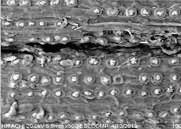
body geometry, anisotrophy/orthotropy and debonding mechanism.
A stress-strain curve of OPEFB fibre is presented in Figure 2 where there are three regions observed during the analysis: Elastic region, plastic/debonding region and fracture region. In the first region, the bonding of silica bodies with fibre was tight and perfect while no failures or breakages were observed on the interface of the silica bodies. In the plastic/ debonding region, the interface of the silica bodies started to debond, causing the curve to deviate from elastic line. In the final region, the debonding continued until complete failure or breakage was observed.
A 2D model development was performed using Abaqus software where the silica bodies were considered as filler and the OPEFB fibre as matrix. The effect of filler volume fractions (10%, 15% and 20%) was performed using the simulation of 10-spikes filler. A control of no spikes (circular filler) was also compared.
The results showed that the models with spikes were almost similar with the circular filler. The same result was also obtained for different volume fractions (Figure 3). The effect of the number of spikes (5, 10 and 20) on the silica bodies was also investigated, using the similar volume fraction of 15% (Figure 3). Due to the

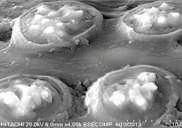

A Nehemiah Group of Companies
We are a supplier of high quality geosynthetic products used for soft soil stabilization, slope reinforcement, coastal erosion protection, river bank protection, landfills, drainage, road and railway construction.
Our Products:
NEXTILE NON-WOVENS
NEXFORCE HIGH-STRENGTH WOVENS
NEXGRID GEOGRIDS
We also provide design, specification, bill of quantities, cost estimate and drawings free-of-charge.








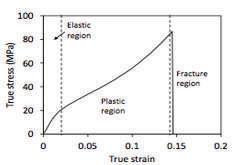
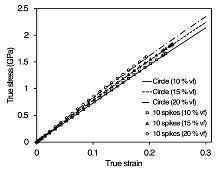
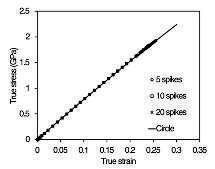

longitudinal arrangement of silica bodies along the fibre, there was a possibility of direction-dependant behaviour (anisotropy). The results showed that the 10-spikes models of anisotropy A (Ey = 3.235 GPa) and anisotropy B (Ey = 1.617 GPa) were not much different from the models with circular filler (no spikes).
Get in touch with us:
Tel: 03-6142 6638 (Ext. 215)
Fax: 03-6142 6693
sales@neusynthetics com
Sales Team:
Saufi (012-568 5611)
Gordon (012-355 0872)
The effect of silica bodies arrangement was also investigated in a 2D multiparticle model. The model consisted of 20 particles representing the inorganic silica bodies surrounded by the fibre as matrix.
There were three types of silica body arrangements – aligned, clustered and random. Using zone cohesive modelling (CZM), the debonding between the silica bodies and the fibre surface was investigated. Early termination (at 0.02 true strains) was observed in all models with damage, while all models without damage showed similar results with all types of arrangements (Figure 4).
www neusynthetics com
No 45-3, Jalan PJU 5/20, The Strand, Kota Damansara, 47810 Petaling Jaya Selangor Darul Ehsan Malaysia
This 2D model was also found to be more sensitive to critical stress than silica bodies spiked geometry, arrangement of silica bodies on the fibre surface and cohesive energy. Naturally, the silica bodies were found to be
embedded halfway in the fibre surface. The damage of silica bodies at the cross-section of the fibre might be present.
A 3D development was developed to investigate the effect of silica bodies on elasticity and damage along the cross-section of the fibre. The difference in thickness of the fibre was investigated. The thickness of fibre/ matrix was varied from 0.03 to 0.3 mm to observe the effect of fibre thickness on the elasticity of fibre-protrusion system.
The numerical results showed that the effect of silica bodies on the elasticity of the fibre was not significant when fibre thickness was more than 0.2 mm. Cell wall opening was later incorporated in the 3D model, where the thickness of the cell wall was set at 0.005 mm and the opening size was set at 0.02 mm. Both models showed similar results, indicating that different mechanisms of the fibre might be responsible for the plastic region of stressstrain curve in addition to the silica bodies and fibre interface damage.
The effect of silica bodies was also investigated in ligninolytic enzymes production where the OPEFB fibre was used as the substrate. A local isolated fungus was used in order to produce the ligninolytic enzymes from OPEFB fibre.
The OPEFB fibres used were both raw and chemically treated. The 10day fermentation results showed that treated OPEFB was preferred by the lignin degrader to produce high ligninolytic enzymes. A 5-10% of the increment in the lignin peroxidase enzyme activity was observed. A similar observation was also found with manganese peroxidase and laccase production. This was mainly due to the removal of the silica bodies and a considerable amount of lignin was achieved in the treated OPEFB.
As mentioned by Shamsudin S. et al., [8] the removal of silica bodies left hollow craters, exposing larger surface areas for the enzyme to digest the lignocelluloses materials. The same phenomenon was also found by Harun N.A.F et al., [9]. These silica bodies were present to prevent the fibre from microbial attack. The silica bodies and waxy layer on the outer surface of the fibre act together as an impermeable layer, preventing the fibre from being oxidised and hydrolysed by oxygen and microorganisms.
[1] Shuit S.H., Tan K.T., Lee K.T., KamaruddinA.H. (2009) Oil palm biomass as a sustainable energy source: A Malaysian case study. Energy 34: 1225–1235.
[2] Chun S.G, Kok T. T. and Keat T.L (2010) Bio-ethanol from lignocellulose: Status, perspectives and challenges in Malaysia. Bioresource Technology 101(13): 4834–4841.
[3] Wan Razali W.A., Baharuddin A.S., Talib A.T., Sulaiman A, Naim M.N., Hassan M.A. and Shirai Y. (2012) Degradation of oil palm empty fruit bunch (OPEFB) fibre during composting process using in vessel composter. Bioresources 7(4): 4786-4805.
[4] Abu Bakar N.K., Abd-Aziz S., Hassan M. A., Ghazali F.M. (2010) Isolation and selection of appropriate cellulolytic mixed microbial cultures for cellulases production from oil palm empty fruit bunches. Biotechnology 9:73-78.
[5] Minhee Y., Yule K., Youngran K., Bongwoon C., Gi-Wook C. (2011) Bioethanol production from optimized pretreatment of cassava stem. Korean Journal of Chemical Engineering. 28(1): 119-125.
[6] Nieves D.C., Karimia K., and Horavth I.S. (2011) Improvement of biogas production from oil palm empty fruit bunches (OPEFB). Industrial Crops and Products. 34(1): 1097-1101.
[7] Law K.N., Daud W.R.W., and Ghazali A. (2007) Morphology and chemical nature of fibre strands of oil palm empty fruit bunches (OPEFB). Bio Resources 2(3): 351-362.
[8] Shamsudin S., Md Shah U.K., Zainudin M.H, Abd-Aziz S., Mustapa Kamal S.M., Shirai Y., Hassan M.A. (2012) Effect of steam pretreatment on oil palm empty fruit bunches for production of sugars. Biomass and Bioenergy 36: 280-288.
[9] Harun N.A.F., Baharuddin A.S., Zainudin M.H.M., Bahrin E.K., Naim M.N., Zakaria R. (2013) Cellulase production from treated oil palm empty fruit bunch degradation by locally isolated Thermobifidafusca.BioResources. 8(1): 676-687.





The Sarawak Government has proposed Tanjung Manis Halal Hub (TMHH) as the largest integrated halal hub in the State. It covers 77,000 ha of agriculture land, stretching from Pulau Bruit in the north to Sarikei Town in the south. In line with the Government's aspirations under the New Economic Model (NEM), TMHH is planned to attract investors with high value projects and transform the region into a high-income generator zone.
Through the Sarawak Timber Industry Development Corporation (STIDC), the Sarawak Government is currently looking at ways to expand the economic activities in the vicinity of existing waterways, from the current aquaculture industry to other activities such as refineries, oil & gas onshore facilities and ship building.
The area of study is located in deltas and estuaries of several major rivers, including Batang Rajang. The near-pristine environment includes mangroves and coastal peat forests, which are ideal for agriculture. The proposed area is located at the meandering channel in a coastal wetland that is subject to diurnal tides. It is approximately 8-10km from the river mouth and near Belawai Island. An approximate location of the study area is shown in Figure 1.
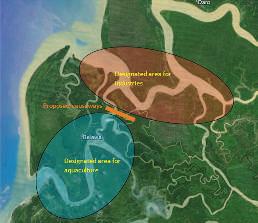
Numerical models were established to assess environmental impacts which might be caused by the waterway separation. Numerical models were established to simulate the complex coastal response to the proposed engineering works. Delft3D was used as the numerical modelling tool to investigate hydrodynamics, sediment transport and morphology, water quality for fluvial, estuarine and coastal environments.
The coastal hydraulic model consisted of hydrodynamic,sedimenttransportandpollution tracer dispersion modelling. Hydrodynamic modelling was carried out to simulate the water level variations and current velocities induced by a variety of force functions, such as tides. This model formed the basis for carrying out the subsequent coastal processes.
At this stage, the effluent characteristics from industrial works were not known. Therefore, tracer dispersion would be modelled to assess

the dilution and spreading of possible pollutions in the delta area. As the ship building area will extend about 10km along the riverbanks, three typical locations have been selected to represent the discharge points upstream, downstream and midway of the project site (Figure 2).
TIDE AND CURRENT
Hydrodynamic modelling was carried out to simulate the water level variations and current velocities induced by tides and river flows under existing condition and the proposed option.
Water level and current plots for the exit conditions and with the proposed causeways during the typical tide stages, are shown in Figures 3 and 4 respectively. The results show that the current flow at the project site is dominated by the tidal variations.
Hydrodynamic impacts can be assessed by comparing the flow conditions betweenexistingconditionsandtheproposedcauseways.Basedontheresults, it is possible to conclude that:
1. The proposed causeways block the flow in the two waterways, LobaBuan and LobaPaloh. The flow field in the vicinity of causeways is nearly stagnant.
2. Water level difference before and after the construction of the causeways is in the order of 0.1 m in the blocked waterways.
3. The maximum current speed difference is in the order of 1.0 m/s in the blocked waterways.
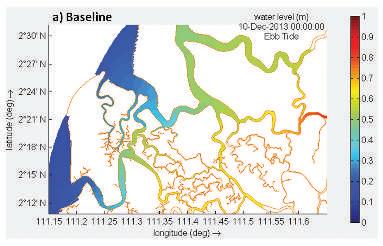
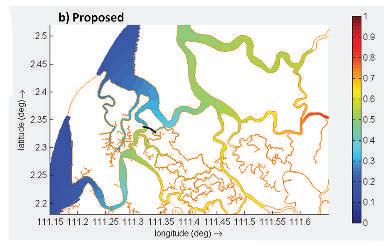




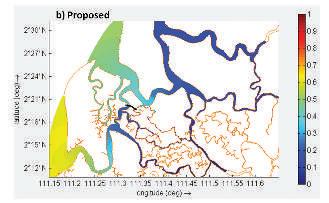






The sediment transport pattern can be affected by the proposed development works when the local flow field is modified. Siltation and erosion processes will cause the local morphology changes. The simulation was carried out to assess the sediment transport before and after the development works and the impact on the local morphology variations. The mean sediment transport rate and accumulated erosion or siltation under normal flow conditions are shown in Figures 5.1 and 5.2, respectively.
The impacts on sediment transport can be assessed by comparing the typical sediment transport rate between the existing conditions and with the proposed causeways. Based on the results it is possible to conclude that:
1. Sediment transport patterns in the waterways of LobaBuan and LobaPaloh and adjacent river reaches are different if the flow is blocked by the causeways.
2. The sediment transported into LobaBuan and LobaPaloh can be trapped in the outer reaches of the long waterways. See Figure 5.2 (b). The maximum accretion rate under normal flow condition is in the order of 1 m/year.
3. However, further inside the waterways to the causeways, siltation or erosion is less as the flow is smaller and sediment transport rate is much lower in the inner reaches. See Figure 5.2 (b).
The dispersion pattern of pollutants discharged from three different outfall locations along the river is shown in Figure 2. For analysis purposes, it is assumed that the discharge is 10 m3/s with the initial concentration of 100 ppm (or 0.1 kg/m3), which is continuously discharged from each outfall. This assumption is conservative for common applications of pollutant discharge from plants.



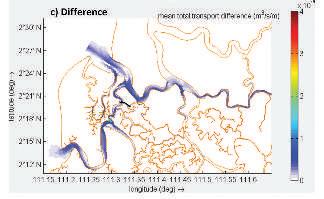

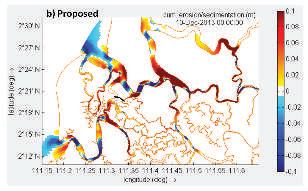

The typical dispersion patterns are plotted in Figures 6.1 to 6.3 for different discharge points, respectively. The pollutant plume can reach the designated aquaculture regions through LobaBuan and LobaPaloh and other waterways. The concentration, however, is very low at this region. For example, at the point located in the northern part of aquaculture area, the concentration is 1.5x103kg/m3, i.e. only 0.15% of the assumed initial value. With the causeways, no discharge plume is dispersed through LobaBuan and LobaPaloh. However, trace pollutant is still observed in the aquaculture area as this can be dispersed via other waterways. The concentration is further decreased to 2x10-4 kg/m3. The time series of pollutant concentration during simulation period are shown in Figure 6.4.
Based on the results it is possible to conclude that:
1. The pollutant dispersion pattern and concentration distributioninthewaterwaysofLobaBuanandLobaPaloh are different for the three outfall points.
2. Most of the pollutant load is diluted in the main river of Btg. Paloh as the outfalls are located along the river. The pollutant plume is also dispersed into the neighbouring tributaries and waterways.
3. The pollutant plume can reach the designated aquaculture regions through LobaBuan and LobaPaloh and other waterways. However, the concentration is very low in the region. With a soluble pollutant loading of 100 ppmat10m3/sflowrate,theconcentrationisdecreased to less than 0.02 ppm.
4. For some special cases when the pollutant matter is insoluble and transported in the form of small particles or patches, the concentration may occasionally reach up to 1 ppm.
5. The causeways can block the dispersion through LobaBuan and LobaPaloh and the concentration is substantially decreased behind the causeways. The concentration is decreased to below 0.002 ppm.





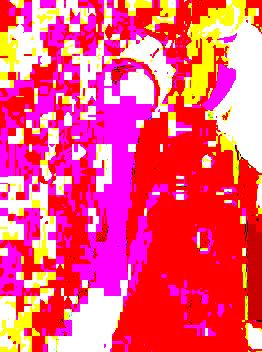


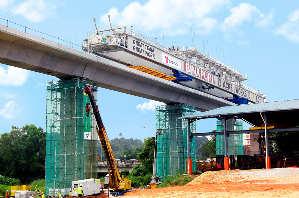
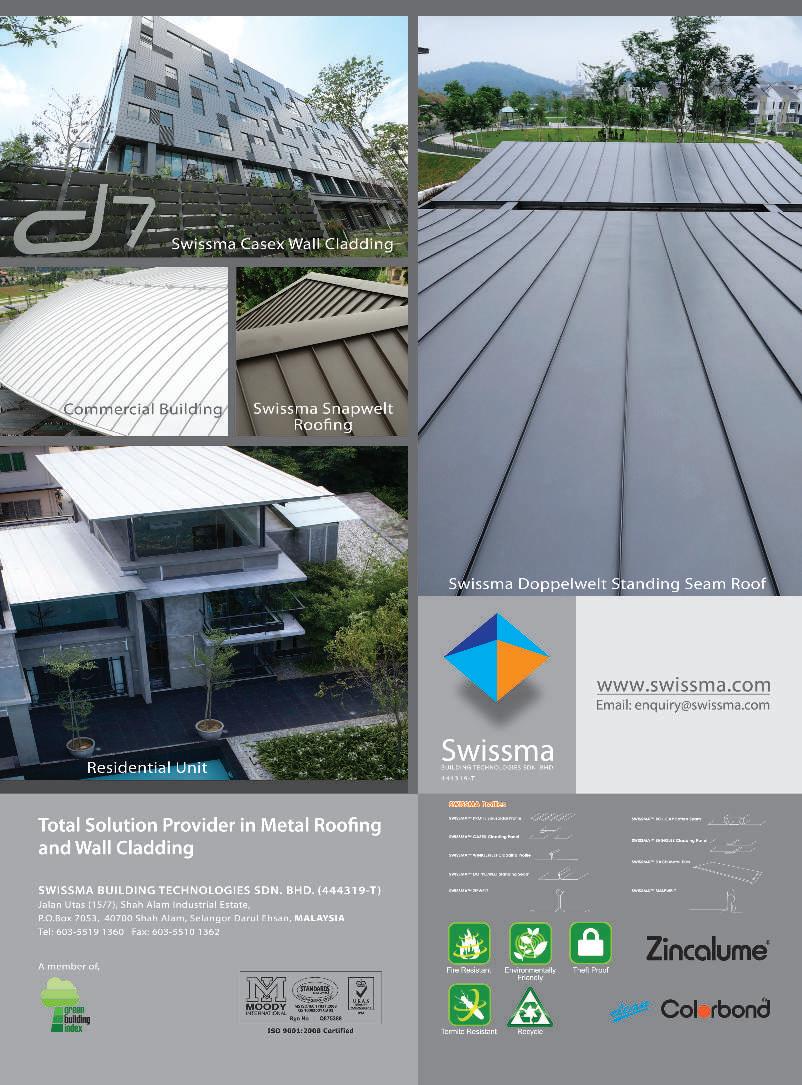



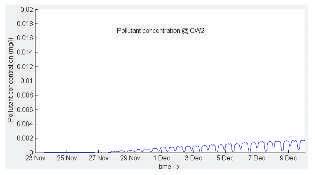
This coastal hydraulic study investigates the impact of the proposed causeways in term of hydrodynamic, sediment transport, sediment and pollutant dispersion. Based on the results, it can be concluded that:
1. The proposed causeways block the flows in the two waterways, LobaBuan and LobaPaloh. The flow field in the vicinity of the causeways is nearly stagnant.
2. Water level difference before and after construction of causewaysisintheorderof0.1mintheblockedwaterways.
3. Current speed difference is in the order of 1.0 m/s in the blocked waterways.
4. Sediment transport patterns in the waterways of LobaBuan and LobaPaloh and adjacent river reaches are different if the flow is blocked by the causeways.
5. The sediment transported into LobaBuan and LobaPaloh can be trapped in the outer reaches of the long waterways. The maximum accretion rate under normal flow condition is in the order of 1 m/year.
6. Further inside the waterways to the causeways, siltation or erosion becomes milder as the flow is smaller and sedimenttransportrateismuchlowerintheinnerreaches.
7. The pollutant dispersion pattern and concentration distributioninthewaterwaysofLobaBuanandLobaPaloh are different for the three outfall points.
8. Most pollutant load is diluted in the main river of Btg. Paloh as the outfalls are located along the river. The pollutant plume is also dispersed into the neighbouring tributaries and waterways.
9. The pollutant plume can reach the designated aquaculture regions through LobaBuan and LobaPaloh and other waterways. However, the concentration becomes very low in the region. With a soluble pollutant loading of 100 ppm at 10 m3/s flow rate, the concentration decreases to less than 0.02 ppm.
10. The causeways can block the dispersion through LobaBuan and LobaPaloh and the concentration is substantially decreased behind the causeways. The concentration is decreased to below 0.002 ppm.
11. For special cases when the pollutant matter is insoluble and transported in the form of small particles or patches, the concentration may occasionally reach up to 1 ppm.
Ir. Dr Hii Ching Poon is director of Hydrology and Hydraulic Section at Jurutera Adda Sdn. Bhd. His working experiences include hydrological studies of major water resources projects, water quality study, river hydraulic and coastal modelling study, lood mitigation projects, drainage and rivertraining design.
Dr Wang Zhi Qian graduated with a PhD in Nanyang Technological University (NTU) Singapore in 2006 and served as Research Oficer at NTU. He has vast experience in Hydraulics, Numerical and Physical Modelling of river and coastal processes and sediment transport. He is currently the Managing Director of G&P Water (Singapore) Pte. Ltd.
Ir. Chong Sun Fatt obtained his B.Eng (Hons) in Civil from University of Malaya in 1978 and M.Sc. (Irrigation Engineering) from KU Leuven, Belgium in 1991. He served in the Department of Irrigation and Drainage Malaysia from 1978 to 2003. He was involved in numerous hydrological, water resources, lood mitigation and Irrigation and Drainage projects. He is currently the principal advisor in G&P water and Maritime Sdn. Bhd.
Ir. Lim Sin Poh graduated from Universiti Tecknologi Malaysia with a B. Eng (Civil) and completed his post graduate studies in Nanyang Technological University Singapore, graduating with a M. Eng. (Civil). He started his career as a hydrology and hydraulic engineer. He has been in civil and structural engineering consultancy for more than 15 years and is currently the Managing Director of G&P Water and Maritime Sdn. Bhd.

by Ir. Hor Kok Luen
Ir. Hor Kok Luen graduated from University of Science Malaysia (USM) in 2001 with Bachelor of Degree (Hons.) in Mechanical Engineering. He is currently chief engineer of a established palm oil group involved in palm oil mill processing, long ibre plant, short ibre plant, solvent extraction plant, biogas capturing plant and of green energy generation for grid connection.
He is a corporate member of The Institutions of Engineers Malaysia (IEM) in Mechanical discipline and a registered Professional Engineer with the Board of Engineers Malaysia (BEM). He is currently a committee member of Food & Agricultural Engineering Technical Division (AFETD).
In palm oil mill processing, Oil Palm Empty Fruit Bunch (EFB) is treated as biomass waste. Currently, with the correct approach, matured engineering and technology innovations, this biomass waste can be further processed and treated as a value-added product which can generate proits.
These products are mainly dried long palm fibre, short loose fibre and pressed EFB liquor. Dried long palm fibre makes a good substitute for coconut fibre in furniture industries (e.g. mattress fibre and cushion production). Short loose fibre can be turned into fuel in the solid fuel boiler (volatilematterat40%maximum). The liquid based product, pressed EFB liquor, is the main source for Chemical Oxygen Demand (COD)enhancementforboosting the formation of methane gas, capturing renewable energy and power generation.
This paper briefly elaborates, with a clearer scope, about the value-added products which are a significant new milestone for downstream activities in conventional palm oil mill processing.
Inasimplemassbalanceanalysis, the composition of the Empty FruitBunch(EFB)istypicallyabout 21% of the overall Fresh Fruit Bunch (FFB). Oil Palm EFB used to be treated as biomass waste in the palm oil mill processing. Handling and disposal of EFB was a serious problem and a great challenge to the industry. If not handled properly, it has a huge, negative impact on the environment. Currently, this oil
palm biomass waste is further processed to produce valueadded products.
Below is a typical EFB treatment process flow chart which is used in most palm oil mills today. It is becoming more popular as the related machines are now more mature in design, with user-friendly operations and maintenance and well as safe to use. As illustrated, after the treatment of the EFB, there are various downstream activities for producing value-added products. These value-added products can be commercialised while the related production lines are practical and workable.
Heavy phase
Skimmed oil layer
Recovered oil back to palm oil mill processing line for purifying and de-moisturising
Sludge to e uent treatment plant for COD (Chemical Oxygen Demand) enhancing and more methane gas formation
Methane gas formation and capturing
Renewable energy and power generation

EMPTY FRUIT BUNCH (EFB)

RECOVERED OIL FROM PRESSED EFB LIQUOR

BIOGAS PROJECT-METHANE GAS CAPTURING
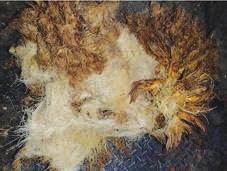
PRESSED EMPTY FRUIT BUNCH (PEFB)
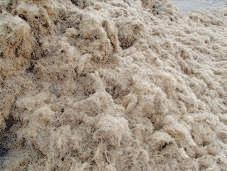
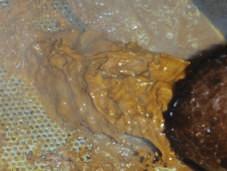
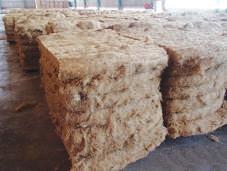
DRIED LONG FIBRE

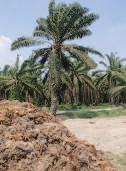
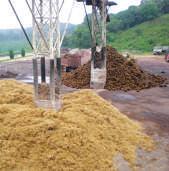
COMPOSTING PROJECT RAW EFB AND SHREDDED EFB
From the EFB treatment flow chart and photographs as illustrated here, the value-added products are explained briefly below.
EFB FROM PALM OIL MILL (THRESHING STATION)
Conventionally,thesterilisedoilpalmfruitletsattachedtothe bunch must be detached, threshed and recovered through processing. The non-fruitlets bunch is called the Empty Fruit Bunch (EFB). The EFB will be separated and treated as biomass waste.
APPLYING EFB PRESS WITH GOOD & MATURED ENGINEERING DESIGN
The EFB removed from thresher will be fed to the bunch press for further treatment (pressing process). The solid phase of
EFB MULCHING IN THE ESTATE
the pressed product is called pressed & dewatered EFB (with moisture content of about 50%). The liquid phase of the pressed product is called pressed EFB liquor.
1. As mulching material in the oil palm estate
EFB will degrade fully in about 6 months.The degradable pressed and dewatered EFB can partially rehabilitate and recuperate the nutrients in the soil. However, it requires a lot of effort and energy as well as added costs as it is very labour intensive to transport and distribute in the estate.




2. As composting material to produce organic fertiliser
The pressed and dewatered EFB is mixed with palm oil mill effluent (POME), composted, bio-reacted and degraded to produce an organic fertiliser which is suitable for rubber and oil palm plantations, vegetable farms and plant nurseries.
3. Alternative fuel for palm oil mill solid fuel boiler
Inadditiontogettingpressedliquorandtorecoveroil,the pressedanddewateredEFBbunchfromtheEFBpresscan also be utilised as short and loose fibre. This shredded EFB fibre, mainly ½” to 2” in length, with a maximum moisture content of 40%, is a good combustible fuel for solid fuel steam boilers in palm oil mill as well as other industries. Furthermore, this also means a lower consumption of palm kernel shell and mesocarp fibre (the fibre from the oil palm fruitlets skin) as fuel for steam boilers. The palm kernel shell saved can be sold to other industries such as the glove, latex and bricks factories. This will generate extra revenue for the company. Currently the price of the raw palm kernel shell (ex-mill) is RM150 to RM170 per metric ton.
4. To produce dried long ibre (DLF): Highest value-added products
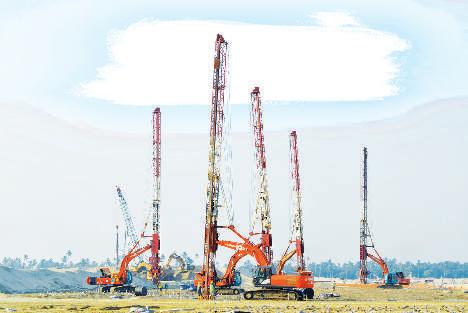


Pressed EFB bunch can be used to produce dried long fibre as a raw material for fibre-based end products such as mattresses and cushions which traditionally use coconut fibre. The DLF produced is biodegradable, healthy and environmental friendly. It contains no toxic elements. With this the pressed and dewatered EFB can be used to produce higher value-added products and generate even more revenue for the company besides solving the Department of Environment (DOE) issues on EFB liquor (water pollutant-based liquor). Not only that but it can also solve another potential DOE issue, that of EFB disposal. This is linkable to the government enforcement programme which strictly controls the application of burning EFB in the incinerator, especially in Sarawak. It was prohibited in all other States a few years ago.
THE VITAL APPLICATION OF THE HEAVY PHASE OF THE PRESSED EFB LIQUOR
Heavy phase as High COD (Chemical Oxygen Demand) agent for enhancing methane gas formation
Chemical Oxygen Demand (COD), in layman’s terms, is the standard method for indirect measurement of the amount of pollution (which cannot be oxidised biologically)inasampleofwater.TheCODtestprocedure is based on the chemical decomposition of organic and in organic contaminants, dissolved or suspended in water. The result of a COD test indicates the amount of
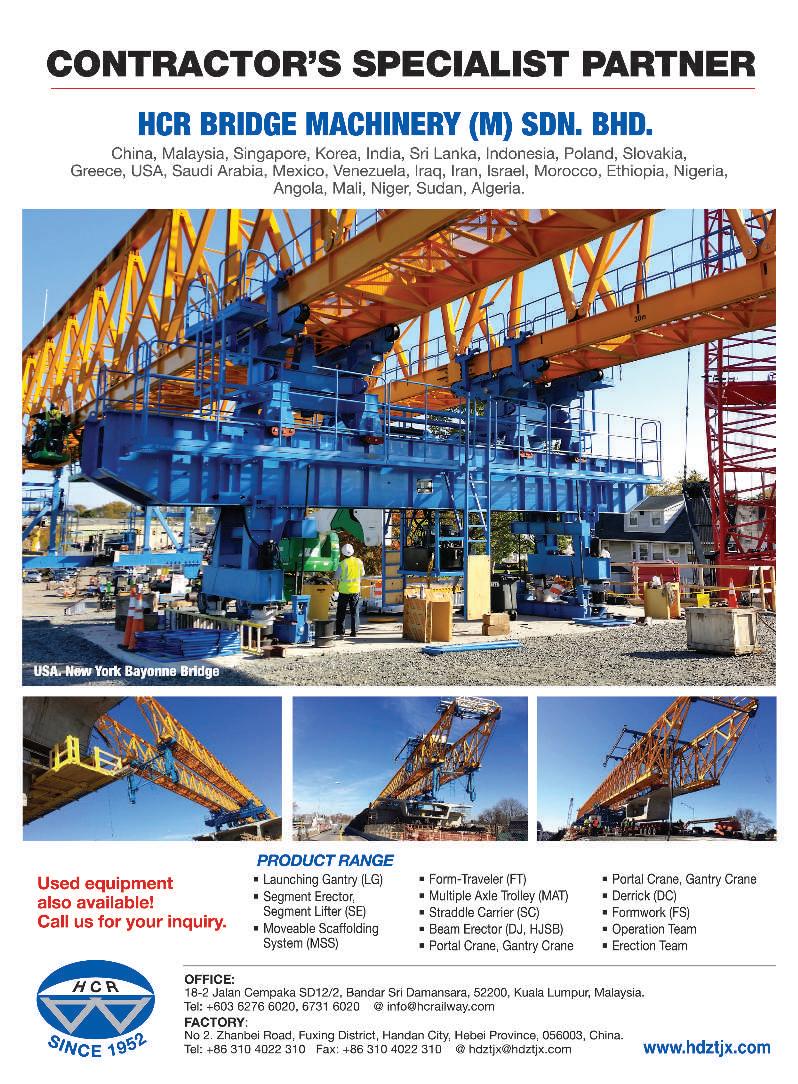

ANCHOR-REINFORCED EARTH

Our Strength is Your Confidence
APPLICATION
Bridge Abutment
Land Reclaimation
Housing Development & Temporary Embankment
Other Civil Engineering Application



TM
Cost Effective Retaining Wall System
APPLICATION
Slope Protection Embankment Stabilization
Housing & Road Project
Other Civil Engineering Application

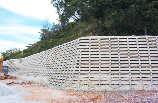
For enquiry please contact : CRIB TECHNOLOGIES SDN BHD (564096-A), ARE WALL (M) SDN BHD (542608-W)
46-A, SS 22/25, Damansara Jaya, 47400 Petaling Jaya, Malaysia
Tel: +603-7731 7391 Fax: +603-7725 7868
Email: groadesb@yahoo.com Website: http://www.ctsbare.com
water-dissolved oxygen (expressed as parts per million or milligrams per litre of water) consumed by contaminants during two hours of decomposition from a solution of boiling potassium dichromate. The higher the COD, the higher the amount of pollution in the test sample. For contaminants that can be oxidised biologically, the biological oxygen demand (BOD) method is used.
• In line with Biogas Capturing Project (MPOB and DOE requirement) – Higher COD obtained
Besides the free oil recovery, the EFB press machine serves to remove excess water in the EFB (moisture reduction) to suit its various applications as well as requirements from the relevant government authorities.
Under the National Key Economic Areas (NKEA) plan by the Government in the 10th Malaysia Plan (2011-2015), efforts have been put in to transform the country from a middle-income to a high-income nation.
The importance of biogas trapping is evident from its inclusion as one of the eight Entry Point Projects (EPPs) of the palm oil sector under NKEA.
In this context, the Malaysia Palm Oil Board (MPOB) and the DOE have set up regulations towards this implementation. The basic requirements on biogas capturing can be summarised as follows:
1. MPOB Licence condition for all the palm oil mills (compulsory)
2. For existing mills to have biogas capturing by 1 January, 2017, or the latest by 1 January, 2020.
3. Compulsory criteria and condition for upgrading or extension of existing palm oil mills or construction of new mills, effective 1 January 2014.
VITAL ROLE OF PRESSED EFB LIQUOR IN BIOGAS CAPTURING PROJECT
The pressed liquor after EFB bunch press will be collected and pumped to a vertical oil recovery tank. The heavy phase of the clarifier tank will be pumped to the effluent treatment plant together with waste water from condensate pit and oil room sludge pit.
Conventionally, the COD of raw palm oil mill effluent without EFB pressed liquor, will be in the range of 45,000mg/L (milligram per litre) to 55,000mg/L. By having the EFB pressed liquor, the COD concentration can be as high as 75,000mg/L to 90,000mg/L.
The higher value of COD will definitely help generate significantly more biogas (methane gas). With more biogas formation and captured, useful applications or utilisations can be implemented more cost effectively besides fulfilling the requirements set by the authorities.
Title: 2-Day Course on Construction Contracts - Traps and Pitfalls
5 - 6 October 2015
Organised by : Project Management Technical Division Time :9.00a.m.–5.30p.m.
CPD/PDP : 14
Title: 1-Day Course on Trafic Impact Assessment
7 October 2015
Organised by : Highway and Transportation Engineering Technical Division Time :9.00a.m.–5.30p.m.
CPD/PDP : 0
Kindly note that the scheduled events below are subject to change. Please visit the IEM website at www.myiem.org.my for more information on the upcoming events.
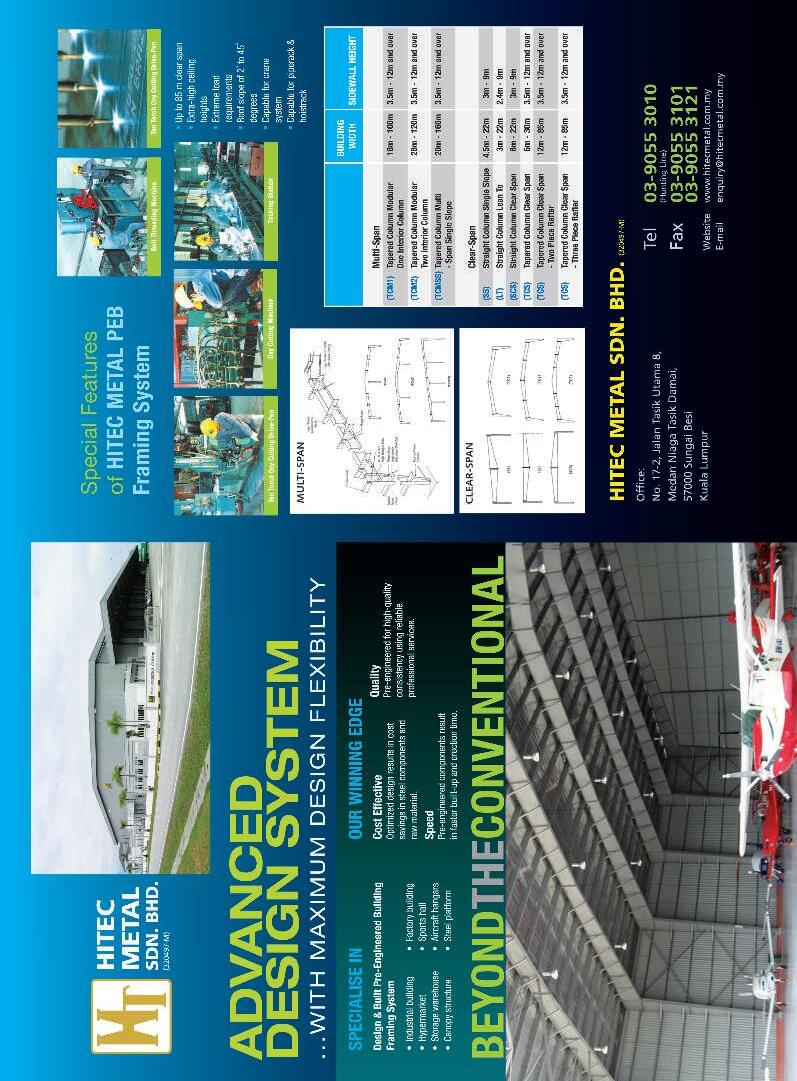


Let us look at activities that can drive us closer to ownership.
Have you ever seen dramatic posters or statistics that scream out about how unsafe we are? What is your reaction (really)? Do you have the urge to jump up and do something about it immediately or do you just ponder deeper on the information?
If you’re the type who jumps up and gets straight into action, you will be extremely proactive and engaged. Most people will just ponder deeper on the information. These shock videos, gory pictures and screaming statistics are just meant to create a basic phase of “Awareness”. These methods are used to reinforce messages or support presentations. But alone by themselves, these are rarely a call to action.
The next phase is when we share an in-house story of an incident or a friend shares his personal experience. This is much more moving and the closer the story is to the group, the stronger will be the emotional link. At such a moment, those in the group will feel that “it is possible that it may happen to me”.
The listener will feel an urge to do something and to take action. This is the crucial stage to push a person into taking action. This is the “Acknowledgement” phase.
The next time you attend a presentation or training that you feel is impactful, take a moment to analyse how the speaker has used stories and emotional links to create that atmosphere.
The final phase is when we involve the person(s) in a hands-on activity. It can be coaching a new employee, standing up to share his personal experience or taking part in an inspection. This is the crucial phase to gainownership.Thisisascloseaswecangetpossiblytodriveownership.
So, the next time someone says that the message has gone out and that the recipients should take action, think again. Perhaps the ownership element is missing. Think of the 3As that we have highlighted here.
Own up – share with me your challenges in getting things moving: pub@iem.org.my
Ownership drives results; not statistics.
The safest risk is the one that you did not take. Often it is the gap in the risk perception that leads to a gap in risk control.

by Ir. Shum Keng Yan
is a chemical engineer and a certiied accident prevention and safety practitioner.
advises on EHS in the chemical, fast moving consumer goods, heavy metal manufacturing and building services industries across Asia Paciic and beyond. He regularly delivers talks at conferences, forums and universities.
In recent years, there was rapid growth in transport infrastructure development in Malaysia, specifically in Klang Valley region. With the construction of highways and mass rapid transit lines as well as the extension of light rail lines, these developments are likely to cause impact on the environment. Careful planning and mitigation strategies are necessary to handlethepotentialissuesandchallenges arisen from such development.
The 10th Asia Pacific Conference on TransportationandtheEnvironment(APTE) is held with the objective to provide a platform of discussion for both local and international experts on the transport related environment issue. It provides the opportunity for the experts, researchers, and consultants from various disciplines to exchange ideas and opinions on the effective strategies and planning to mitigate the potential negative social and environmental impacts caused by transport activities.
The theme of the 10th APTE is Green Transport Development for Sustainable Future.Thetopicsofinterestinclude,butnot limited to: transport system resilient during disaster, transport safety, economic, social and environmental impacts of transport activities and development, impacts of land/sea/air transport operation, transport andenvironmentalissue,impactoflogistics andfreighttransport,raildevelopmentand impact assessment, pavement materials, public transport, and others.
The 10th APTE is co-organized by the Highway and Transportation Technical Division, IEM, Centre of Disaster Risk Reduction, Universiti Tunku Abdul Rahman, and Transportation Science Society of Malaysia (TSSM). It will be held on 8 to 10 November 2016 at Armada Hotel, Petaling Jaya. We welcome Abstract submission for those who are interested to present paper in the conference. The deadline of submission is 15 December 2015. Best paper award will be given and selected good papers will be published in the Journal of Traffic and Transportation Engineering. Please visit: www.utar.edu. my/apte2016/ for more information.

reported by Ir. Yong Hong Liang
Ir. Yong Hong Liang graduated from Universiti Putra Malaysia with Bachelor Engineering (Agricultural) and Master Science (Soil & Water Engineering). He has over 15 years of experience in development of oil palm plantation and rural area in Malaysia and Indonesia. He is the Head of Engineering of TSH Resources Berhad. Currently, he is the Chairman of Agricultural and Food Engineering Technical Division, IEM.

PUMPS play a major role in our lives today. At the petrol station, we use a pump to fill up the car petrol tank. At home, pumps are also used in a number of ways, from the removal of wastewater to boosting the pressure of the incoming water supply. Similarly, in commercial buildings, pumps are also used in a wide variety of applications such as for air conditioning, heating, wastewater removal and fire protection.
What then is a pump? Simply put, a pump is a mechanical device that uses suction or pressure to raise or move fluids, compressed gas, or forces air into inflatable objects. Clearly a pump is there because it serves a purpose. It brings comfort to the habitat.
In order to gain a greater insight into pumps,15IEMmembersvisitedGrundfosPumps Sdn. Bhd. in Shah Alam on 28 March, 2015. Incidentally, Grundfos is the world’s largest

pump manufacturer. Based in Denmark, it was founded by Poul Due Jensen in 1945. The company has some 18,000 employees globally.
The briefing given by managers of Grundfos Pumps Sdn. Bhd. was divided into four parts.
PART 1: Mr. Aew Chan Hoong touched on topics surrounding the hydraulics and pump theories. He discussed the various types of pumps, calculation of pump flow and head, friction losses, pump curves and different situations/elements to consider when sizing pumps and also troubleshooting.
PART 2: Ms. Yew Pei Ling gave a briefing on the solutions available to reduce total electricity consumption via the Grundfos’ optimisation and consultancy services. This service helps to determine if a pump should be repaired or replaced. According to Ms. Yew,apumpinstallationisanalysedtoreduceenergy and money expenditures. In order to achieve this, a plant-wide energy reduction approach is taken. At the end of this exercise/service, the customer receives a full report, with documented savings and payback. This topic was one that participants were greatly interested in as many of their customers were looking for energy efficient solutions.
PART 3: Ms. Vennise Phang highlighted the relevant pumping solutions, namely propeller pumps and rubber dams for flood solutions, and wastewater transport pumps. She also briefed participants on the range of KPL submersible axial flow propeller pumps and KWM submersible mixed flow pumps for flood control and other heavy-duty pumping applications. These include innovative features such as the Turbulence Optimiser which increases efficiency by up to two percentage points. Turbulence Optimiser is an innovative solution for reducing turbulence in the gap between the pump volute and the column pipe. A further positive effect is that misalignment and production tolerances of the column will no longer affect efficiency.
To handle wastewater, processed water and unscreened raw sewage in heavy-duty municipal, utility and industrial applications, SE and SL pumps are used instead. Ms. Phang explained that these pumps are suitable for freestanding installation or for use as portable utility pumps. The S-tube impeller is the only one in the market designed to cope with the challenges of modern wastewater with varying dry matter content. The simple and robust design of the S-tube impeller offers world class hydraulic efficiency without compromising on free passage.
PART4: Mr.HoChingWahtalkedaboutthenationwideaftersales service available from Grundfos, including the new testbed facility available at the head office.
The participants were later taken on a tour of the showroom and the testbed facility.
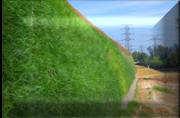

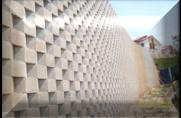

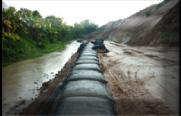


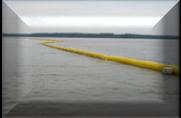

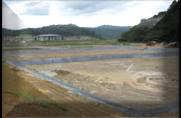

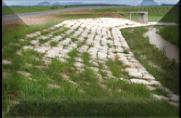
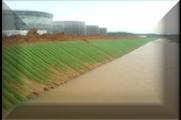
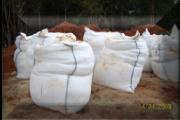

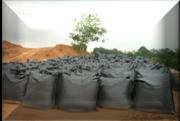


Slope Repair



Reinforced Soil Wall
Keystone Wall
Soft Soil Stabilization
River Bank Protection
Slope Erosion Control
Flood Mitigation
Coastal Protection
Silt & Sediment Control
Landfills
On-site Detention System
Earthworks
Infrastructures

Turf Reinforcement Matrix
Erosion Control Blanket
Coirlog & Straw Watters
Profix Sandfilled Mattress
Geocell / Geoweb
High Strength Geotextile
Nonwoven Geotextile
Polyester Geogrid
Geocomposite / Geofabric
Gabion & Gabion Mattress
HDPE Geomembrane
Geosynthetic Clay Liner
Chemilink
No 12-1 & 12-2, Jalan BPP 5/3, Pusat Bandar Putra Permai, 43300 Seri Kembangan, Selangor Darul Ehsan, Malaysia.
Tel: 03-8943 8598 Fax: 03-8943 8591
Design (Ching): 016-215 5531 Project (Teo): 016-233 5531
Email: landasanimpian@gmail.com

reported by Ir. Cha Hoong Kum
Ir. Cha Hoong Kum graduated from the University of Westminster of UK with a Bachelor of Engineering (Mechanical) Second Class Honours (1st Division) in 1991 and obtained his Master of Business Administration from Leicester University, UK in 1992. Ir. Cha is currently a committee member in the Building Services Technical Division Session 2014/2015.
All work and no play makes Jack a dull boy. With that in mind, the Institution of Engineers organised the Malaysia Charity Golf 2015 on 30 June at Kelab Rekreasi Tentera Udara, Subang, Selangor.
The response was overwhelming with a maximum 128 participants registered. These comprised members and corporate business associates. However, four participants did not turn up on the day of the tournament.
This was a record for IEM charity golf since its inception. The committee was glad that IEM President Dato’ Ir. Lim Chow Hock, Vice President Ir. Gopal Narian Kutty and our special guest, YB Dato’ Ir. Donald Lim, could find time to join the golfers at the event.
It was a good day. The weather was near perfect, with plenty of sunshine and a cool breeze. The fairway was dry. For the last couple of years, the course had gained a notorious reputation for its soggy fairway, especially during the rainy seasons. However we were truly pleased to be enjoying such
fine weather and the game proceeded smoothly.
The Organizing Committee had secured UniqueFireIndustrySdn.Bhd.asthemainsponsor for the event. The other sponsors were as follows:
• ACSON Malaysia Sales & Services S/B
• Dato’ Donald Lim
• GTS Plumbing Sdn. Bhd.
• Orchid Dynamics
• Pyrogen Manufacturing Sdn. Bhd.
• Seng Choon Hardware (M) Sdn. Bhd.
• SMARTECH International Sdn. Bhd.
• SPIND Malaysia Sdn. Bhd.
• TOPAIRE Sales & Services Sdn. Bhd.
• Truewater Cooling Towers Sdn. Bhd.
• WISEPRO Sdn. Bhd.
Hole 7 was selected for the Hole-in-one (the prize, a One-HP Air-conditioner, was sponsored by ACSON). As there was no winner, the prize was given out as a lucky draw prize at the end of the event.
Thewinnersofthetournament,listedbelow, were based on System 36:

From the contributions received from the event, the Organising Committee was able to fulfil its pledge of RM12,000 for the Wisma IEM Building Fund which has an outstanding amount of RM3,879,767.40 as of 30 May 2015.
IEM Vice President Ir. Gopal Narian Kutty accepted the mock cheque on behalf of the IEM President.
The Organising Committee wishes to express its sincere gratitude and thanks to the sponsors, in particular Unique Fire Industry Sdn. Bhd., participants and the secretariat staff who helped make this a successful event in the Institution of Engineers Malaysia calendar.
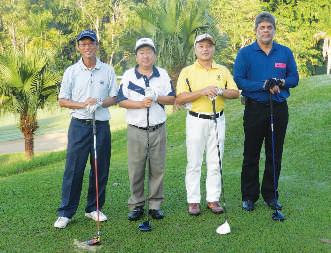

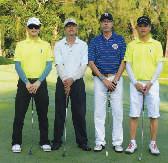
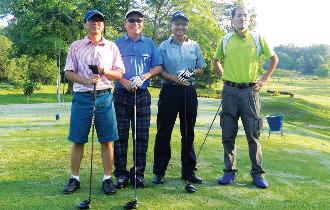
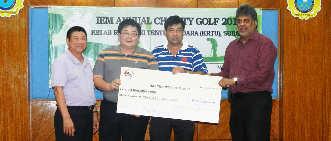

Director of H&T ASSOCIATES Sdn Bhd
Obtained his BEng in Civil & Structural Engineering from UKM and obtained his Msc in Bridge Engineering from UK
Fellow of IEM and corporate member of Institution of Civil Engineers and Institution of Structural Engineers, UK
Involved in many construction engineering design for concrete box girder in highway bridges as well as railway bridges
Awarded “Young Engineer Award 2009”
Involved projects in overseas such as Hong Kong, Indonesia, Nigeria, Brunei and Vietnam
Understand on how to draw up the box girder section (constant section and the haunch section). Familiar with the requirements for the precast segmental box girder and in-situ box girder before analysis and design.
Session 1:
- Introduction
- Basis Requirements of Box Girder Analysis and Design
Session 2:
- Basis of Box Girder Dimension – short span (less than 50m)
Session 3:
- Basis of Box Girder Dimension – medium span (more than 50m)
- Basis of Box Girder Dimension – Long span (more than 80m)
Session 4:
- Internal Prestressed Requirements
- External Prestressed Requirements
Session 5:
- Top Blister dimension & requirements
- Bottom Blister dimension & requirements
Session 6:
- Deviator Dimension & requirements
- Shear Key
EARLY BIRD DISCOUNT RM100
Pay Before: 12 December 2015
- Box Girder Dimension Conclusion for precast and In-situ
Session 7:
- Basic Analysis Modelling for Longitudinal Analysis
Session 8:
- Basic Analysis Modelling for Transverse Analysis
DATE VENUE
12-13 JANUARY 2016
Hartsford Conference Centre, Crown Regency Serviced Suites, Kuala Lumpur.
Closing Date: 05 JANUARY 2016
RM2120 (Individual) RM1908 (Group)
Limit to 30 persons ONLY
* Prices shown above inclusive of 6% GST. Price before GST is RM 2000 (Individual), RM1800 (Group).
Please Contact Applied Technology Group Sdn Bhd:
Phone: 03-56347905 / 017-328 1097
Fax: 03-56379945
Email: admin@apptechgroups.net
12 BEM Approved CPD-Hours (Ref no: ISE/MD/CPD/ATG/012)
CIDB Approved CCD-Points (Application in progress)
Please visit our website at www.apptechgroups.net for detailed course brochure or other engineering related courses.

reported by Ir. Faridon Talib
Ir. Faridon Talib is currently the Vice President with Technip Consultant (M) Sdn. Bhd. an oil & gas engineering Consultant Company. He has been with the oil & gas industries since graduation. He is a fellow member of IEM and also a committee member of IEM Electrical Engineering Technical Division.
To the layman, a transformer is an electrical device that changes alternating current (AC) voltages from one level to another within the power networks. It is an important component in the transmission, distribution and utilisation of electrical energy. Without it, there would be a lot of wastage of energy in the system.
For a better appreciation of transformers and how they are made, the Electrical Engineering Technical Division (EETD) arranged for a visit to one of the largest transformer manufacturers in the region, AM SGB Sdn. Bhd., on 12 March, 2015. Its factory is in the Arab-Malaysia Industrial Park in Nilai, Negri Sembilan. EETD committee member, Ir. Faridon bin Talib, led the group of 15 IEM members.
It started with a briefing by an official of AM SGB Sdn. Bhd., who said the company was incorporated in 1994 and commenced production in early 1996. Initially the intention was to manufacture small rating oil distribution transformers up to 5000 kVA to meet Tenaga Nasional Berhad’s (TNB) demand.
Now, with the installation of a state of the art production facility, it can produce power transformers up to 40 MVA. To further improve quality and reliability for the benefit of its customers, AM SGB Malaysia opened a new manufacturing facility to make cast resin coil and transformers. It is the only manufacturer of its kind within the ASEAN region.
With this development, Malaysia is taking a unique leadership position in ASEAN as far as the transformers are concerned. So far the company has delivered close to 25,000 units of various ratings of transformers for use in the region that include Africa, Asia, Australia Oceania and Middle East.
After the briefing, the visitors were divided into three groups which would visit the following facilities separately.
1. Insulation area: This was where we were

At the core cutting, stacking and assembly area.
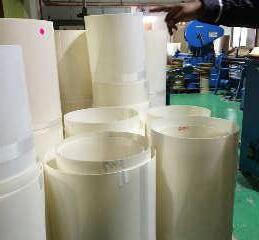
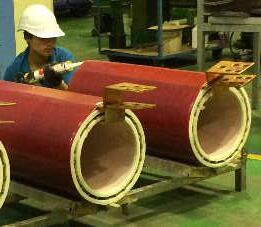
Insulation area. IEM participant listening to the brieing on types of insulation papers.
introducedtothevarioustypesofinsulation papers and the insulation process.
2. Coils and Accessories: Here, we saw the process of making coils. With the help of
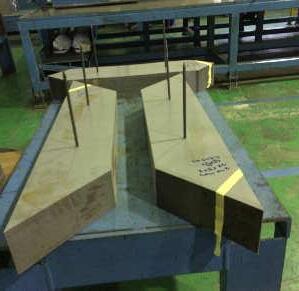

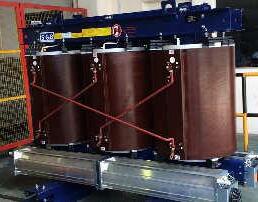
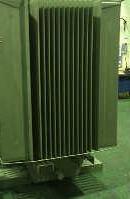
modern machinery and high quality materials, high quality transformers were produced.
3. Core Cutting and Stacking: In this area we were exposed to the core cutting method with different sizes of silicon sheet steel. An optimum core design was achieved with the use of high quality cold rolled, grain oriented electrical sheet steel, step-lap cutting procedure and modern lamination methods without using internal bolts.
4. Distribution Assembly Area: Here, the various parts such as HV coils, LV coils, core, tank cover etc, were assembled to form the active parts.
5. Dryer:Theactivepartsweredriedinthedryertoremove any moisture in the assembly and insulation material. It takes roughly 48 hour to do this.
6. Tanking and Oil Filling: After drying, the active parts were inserted into the tank and bolted. Oil filling was completed through the “oil bleeding process” to remove any air and bubble in the transformer oil. The time required for oil settlement was roughly 24 hours for a distribution transformer and 48 hours for a power transformer.
7. Testing Area: To comply with the Quality Standard, AM SGB follows strictly all testing requirements
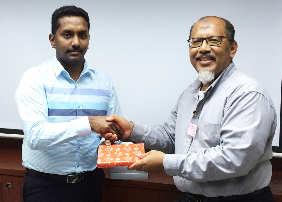
Exchanging tokens
before delivery to customer. Testing was done as per International Standards IEC60076, ANSI AS, Oil & Gas (PTS, DEP). Some of the tests performed were:
• Routine test
• Impulse test
• Partial discharge testing
• Sound ranging chamber
• Oil testing
8. Cast Resin Factory: The cast resin factory used the latest and most modern state of the art technology. Its coil machine was connected to SGB in Germany where any error would be detected and corrected immediately.Accordingtothecompanyspokesperson, cast resin transformers have the following operational advantages:
• High impulse voltages and controlled safety.
• Thermal withstand capability makes overload possible.
• Expansion and contraction of coils in service is tolerated, even for short circuits.
• Long service life is guaranteed.
The visit ended with a certificate presentation ceremony, an exchange of souvenirs and a light lunch.

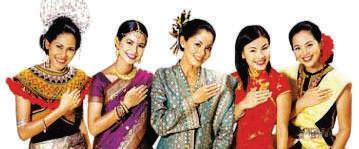

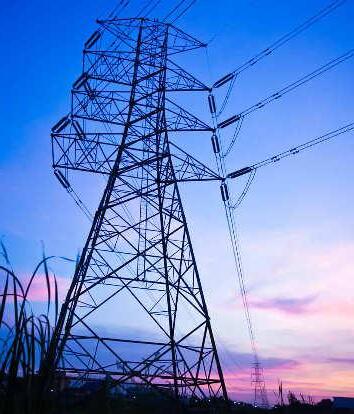






















by Standing Committee on Examinations and Qualifications
IEM is introducing the IEM FUNDAMENTALS OF ENGINEERING EXAMINATIONS(FEE)tofinalyearengineeringstudentsaswellasfresh engineering graduates.
The FEE is an examination on the fundamentals of engineering in the various disciplines. It covers the subject matter in a typical EAC-accredited engineering degree programme curriculum.
The examination would comprise two parts – a Common Paper applicable to all disciplines of engineering and a Discipline-specific paper.
TheobjectiveoftheExaminationisfirstandforemost to ensure that ALL engineering graduates from ALL universities (local and foreign) have grasped the basic fundamentals of their engineering studies, in their respective fields. In view of the diverse number of degree programmes offered by the increasing number of universities both locally and abroad, employers are having difficulty in identifying good recruits to be employed.
The FEE would serve as an assurance to employers that having passed the FEE, the graduate had been tested on his/her knowledge on the fundamentals of engineering after graduation and therefore employers are assured that the graduate is trainable. In order to pass the FEE,
the graduate would at least have to revisit what he/she had learnt in the early stages of the degree programme and this would refresh his/her knowledge learnt before entering the job market. In short, the FEE will serve as a means of ensuring that graduates have achieved the required standard where engineering fundamentals are concerned.
The FEE helps to provide employers with a preliminary screening mechanism thereby giving you an additional level of evaluation to select the right candidate for your company. Employers would therefore be able to save time and resources as the process automatically shortlists the eligible candidates.
However, for the FEE to play its role to assist you in recruitment of engineers, we hope to receive your support for the implementation of the FEE. Being a voluntary examination (engineering graduates take the examination on voluntary basis), we encourage the engineering graduates to attempt this examination.
Inthisexaminationalsoaimstoshortlistengineering graduates suitable for various sectors of the industry.
Test questions contributed by the industry would ensure that the FEE would indeed test the engineering graduates in the appropriate areas. We provide below the syllabus and details of the examination’s content for your reference.
Your support for this examination is greatly anticipated as a joint effort to improve the engineering profession in the country. For further information regarding the need for this examination, please contact IEM Secretariat.
The examination would comprise two parts namely:
Part 1 Common Exam comprising 40 Multiple Choice Questions testing on logical and analytical thinking as well as Mathematics and Engineering Sciences.
Part 2 Discipline Specific Exam (Elective Exam) comprising 40 Mulitple Choice Questions testing the candidates on their understanding of the fundamentals of engineering related respectively to the five major disciplines of Civil, Electrical, Electronic, Mechanical and Chemical Engineering.
In order to ensure the standard and quality of the examination, the marking scheme will be as follows:
A. Civil Engineering
i. Environmental Engineering
ii. Geotechnical Engineering
iii. Structural Engineering
iv. Water Resources Engineering
v. Highway and Transportation
Marking Scheme
Each correct answer will be given 1 mark. For each incorrect answer:
i. Common Exam - deduct 1/4 mark
ii. Elective exam - deduct 1/3 mark
A candidate will need to accumulate a total of 50% of the marks from each Exam paper to be given a PASS.
Common Exam
i. Engineering Mathematics, Economics and Probability & Statistics
ii. Engineering Science
iii. Analytical Reasoning and Logical Thinking
B. Electrical Engineering
i. Circuits and Signals
ii. Digital and Analogue Electronics
iii. Electromagnetic Fields and Waves
iv. Instrumentation and Control
v. Communication Systems
vi. DC and AC Machines (Single- and Three-Phase)
vii. Power Electronics and Drives
viii. Power Systems
ix. High Voltage Engineering
x. Electrical Distribution and Utilization
C. Electronic EngineeringD. Mechanical Engineering
i. Circuits and Signals
ii. Digital and Analogue Electronics
iii. Electromagnetic Fields and Waves
iv. Instrumentation and Control
v. Communication Systems
vi. Electronic System and Integrated Circuit Design
vii. Microprocessor Systems
viii. Computer Architectures
ix. Multimedia Technology and Applications
E. Chemical Engineering
i. Chemistry and Biochemistry
ii. Thermodynamics
iii. Material and Energy Balance
iv. Momentum Transfer
v. Heat Transfer
vi. Mass Transfer
vii. Chemical Reaction Engineering
viii. Process Control
ix. Safety, Health and Environment
x. Process and Plant Design
i. Mechanical Design and Analysis
ii. Kinematics, Dynamics, Vibrations and Control
iii. Materials and Processing
iv. Thermodynamics, Energy conversion, Heat Transfer
v. Refrigeration and HVAC
vi. Fluid Mechanics and Fluid Machinery
vii. Manufacturing and Management

The Institution of Engineers, Malaysia

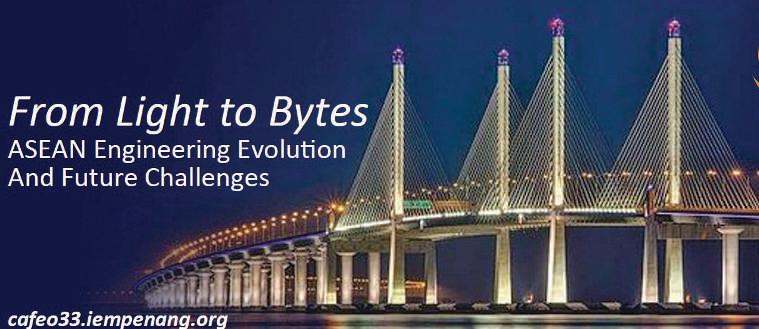
BACKGROUND
TheInstitutionofEngineers,Malaysiaishostingthe33rdConferenceof theASEANFederationofEngineeringOrganization 2015tobeheldfrom 22ndto26thNovember.PenangisthehostingcityforCAFEO33, 2015.
TheInstitutionofEngineers,Malaysia(IEM)PenangBranch,asthemain host,ispleasedtoinviteother engineeringorganizations, universities and R&Dinstitutionstoparticipateinthisprestigiousconference& exhibition with thethemebelow:
THEMES
From Light to Bytes: ASEAN Engineering Evolution and Future Challenges SUB-THEMES
• Integrated public transportation system in urban development.
• Electrical, electronic, mechanical, information and communication technology engineering.
• Engineering and technology for sustainable infrastructure design
• Chemical and environmental engineering development.
• Engineering education and women engineering in developing countries.
CONFERENCEREGISTRATION FEES
Theregistrationfeeforconferencedelegateswouldincludesession,tea breaks,lunchesandwelcomingreception andfarewellbanquetdinner. TheregistrationfeeforAFEOdelegatesareasfollows:
•AFEODelegateUSD 100orRM380
• WEAFEODelegateUSD 100orRM380
• YEAFEODelegateUSD60orRM228
• AccompanyingPersonUSD 100orRM380
• NonAFEOUSD 200orRM760
CONFERENCESECRETARIAT
TheInstitution of Engineers, Malaysia (Penang Branch)
InordertofacilitatetheplanningoftheConference,those wishingtoattendarerequestedtoregisteronlineat cafeo33.iempenang.org ortocomplete andreturnthe Registration Form, andreturntotheCAFEOSecretariatby email,mailorfax(Refertothecontactdetailonfollowing section)asearlyas possibletofacilitate ourpreparationofyour participation.
Thefirst 100delegateswhosuccessfullyregisteredwith fullpaymentthroughonlineorCAFEO secretariatwillbe givena door gift.
TheOrganizingCommitteehasarrangedprogrammesfor accompanyingspouse/personto historicalmonuments,tourism andcommercialcentresinPenang.Theregistrationfeeshall be USD30 or RM114 forthe2tours.(IslandToursand HeritageTours).Visit ourwebsiteformore information.
CONFERENCEVENUE
Hotel EquatorialPenang
JalanBukit Jambul,11900Penang
T: +60 4 632 7000 F: +60 4 632 7100
E: info@pen equatorial.com
W: www hotel-equatorial-penang.com
Level 5-5a NorthamVenture Building, 37, JalanSultan Ahmad Shah, 10050 Georgetown, Penang, Malaysia.
T: +60 4 818 2045 F: +60 4 226 4490
E: cafeo33@iempenang.org SUPPORTEDBY



Ir. Chin Mee Poon www.facebook.com/ chinmeepoon
Ir. Chin Mee Poon is a retired civil engineer who derives a great deal of joy and satisfaction from travelling to different parts of the globe, capturing fascinating insights of the places and people he encounters and sharing his experiences with others through his photographs and writing.
n a sunny spring day in 2015, my wife and I left Toulouse for Andorra in a new Toyota Auris Hybrid. I was at the wheel. We had rented the car in Paris earlier so that we could visit the many remote but quaint French villages that would otherwise be hard to reach.
With an area of 468 sq km, the Principality of Andorra is one of the few microstates in Europe. It is nestled high in the eastern part of the Pyrenees, at an average altitude of about 2,000m above sea level. The country is located about midway between Toulouse in France and Barcelona in Spain, being 185km south of the former and 208km north of the latter. The Pyrenees mountain range,whichextendsfromtheAtlanticOceanto theMediterraneanSea,formsanaturalboundary between France and Spain.
We took 3 hours to reach the Andorran border where a border control officer just waved us through. We did not even have to stop. Andorra is one of the few countries in the world that anyone can visit without a visa.
At the start, the road followed the meander of a river. Then it started to twist and turn as it climbed the steep mountain side, creating a series of hairpin turns. After driving a few kilometres, we arrived at the first settlement, Pas de la Casa. As its name suggests, Pas de la Casa is situated on a mountain pass. We stopped and dropped in at the tourism office to get some maps and pamphlets. We also noticed that somehotelsdisplayedveryattractiveroomrates but we decided to push on to the next sizeable settlement, Canillo, which was 15km away.
After a view-point at about 2,400m asl, the road started winding its way down the steep
mountainside into a valley. We made a few more stops to admire the spectacular scenery and we reached Canillo at twilight.
At an altitude of 1,526m, Canillo is the largest settlement in the parish of the same name. Andorra is administratively divided into 7 parishes. The parish of Canillo has a population of only 4,850 out of a total national population of 78,200. The village is extremely charming, and we were immediately persuaded, at first sight, to put up the night there.
After checking out various options, we settled for a double room with en-suite facilities in a hotel on the main street for 55.50, inclusive of breakfast. The room was very spacious, well equipped and clean. It was definitely better value for money than hotels in France, generally. At the suggestion of the hotel owner, we had a sumptuous dinner in a very popular Portuguese restaurant to celebrate our 41st wedding anniversary.
We were extremely happy with our decision to visit this tiny country. Only 8% of the country is urbanised and cultivated. The rest is made up of forests, lakes, rivers and mountains. That suited nature lovers like us perfectly well. There was also one other attraction: Petrol here was about 30% cheaper than that in France!
Andorra also has a unique system of government. It is the only country in the world with two heads of state, known as co-princes. They are the Bishop of Urgell, Spain, and the presidentofFrance.Thispeculiarityhadevolved from an arrangement rooted in a medieval document known as Pareatges.
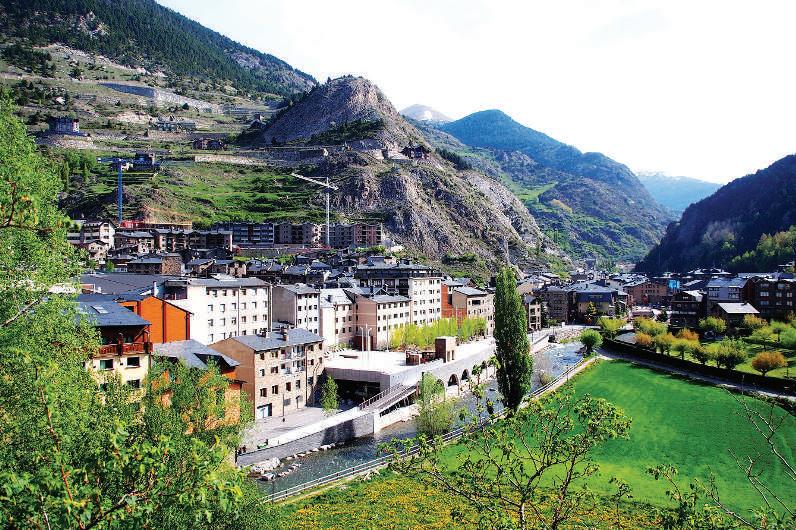
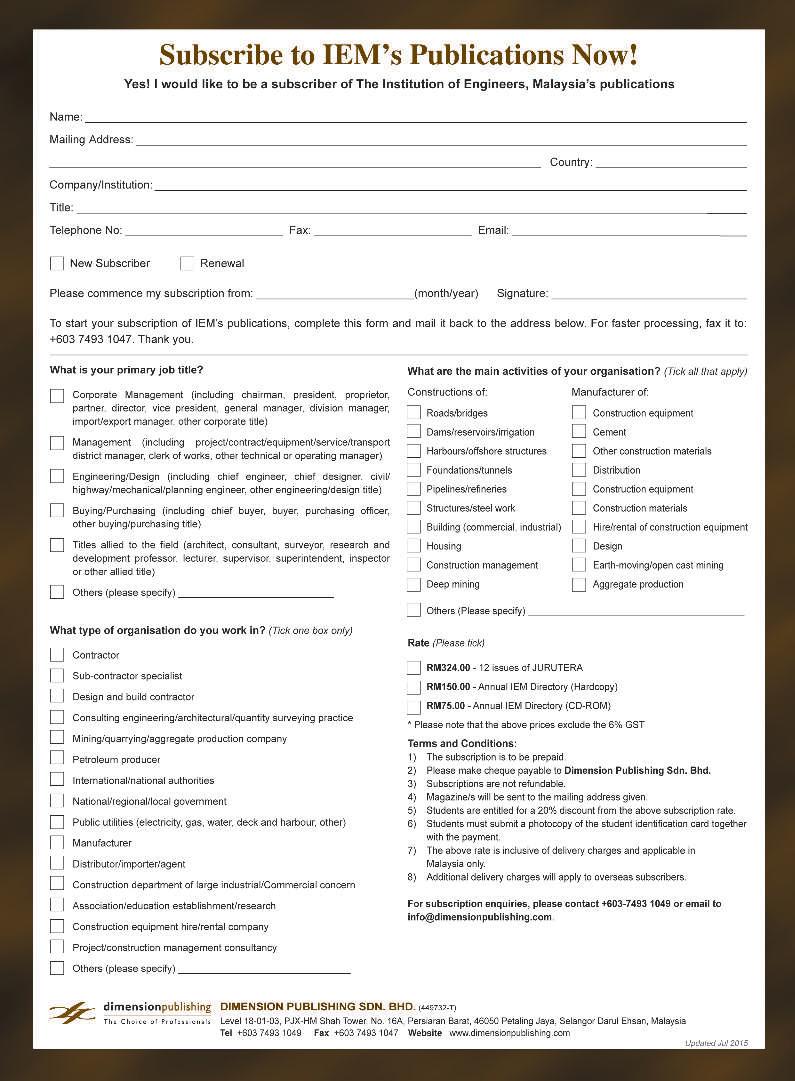
To All Members,
Tarikh: 14 September 2015
BerikutadalahsenaraicalonyanglayakuntukmendudukiTemuduga Profesional bagi tahun 2015.
Mengikut Undang-Undang Kecil IEM, Seksyen 3.8, nama-nama seperi tersenarai berikut diterbitkan sebagai calon-calon yang layak untuk menjadi Ahli Insitusi, dengan syarat bahawa mereka lulus Temuduga Profesional tahun 2015.
Sekiranya terdapat Ahli Korporat yang mempunyai bantahan terhadap mana-mana calon yang didapai idak sesuai untuk menduduki Temuduga Profesional, surat bantahan boleh dikemukakan kepada Seiausaha Kehormat, IEM. Surat bantahan hendaklahdikemukakansebulandaritarikhpenerbitandikeluarkan.
Ir. Yam Teong Sian Seiausaha Kehormat, IEM, PERMOHONAN BARU NamaKelayakan
KEJURUTERAAN AWAM
LIAU KOK SIONG BE HONS (PORTSMOUTH) (CIVIL, 1999)
MSc (PORTSMOUTH) (CIVIL, 2001)
TUIN KIAN KOKBE HONS (MALAYA) (CIVIL, 2004)
TULSHI ROYBE (CALCUTTA) (CIVIL, 1969)
RAZMANN BIN ABDUL RASHIDBE HONS (UiTM) (CIVIL,2002)
KEJURUTERAAN ELEKTRIKAL
AZLINAALI BE HONS (UPM) (ELECTRICAL & ELECTRONICS, 2000)
FAIZAL BIN JAPARBE HONS (UTM) (ELECTRICAL-INSTRUMENTATION & CONTROL, 2004)
KHAIRULAZMY KAMALUDDIN BSc (ILLINOIS) (ELECTRICAL, 1985)
LIU SAI KWONGBE HONS (CURTIN) (ELECTRICAL POWER, 2008)
MUHD AZRUL ISKANDAR BIN ZAINAL ABIDIN BE HONS (UNITEN) (ELECTRICAL & ELECTRONICS, 2009) ME (UNITEN) (ELECTRICAL, 2014)
SURES KUMAR A/L GANESANBE HONS (UTeM) (INDUSTRIAL POWER, 2007)
KEJURUTERAAN MEKANIKAL
AMIRUDDIN BIN AMKAROMI BE HONS (UiTM) (MECHANICAL, 2006)
MOHD AZMI BIN SAMADBE HONS (UKM) (MECHANICAL, 2006)
KEJURUTERAAN ELEKTRONIK
ADUWATI BINTI SALIBE HONS (EDINBURGH) (ELECTRONICS & ELECTRICAL, 1999)
TEOH SOO SIANG BE HONS (UPM) (ELECTRONIC/COMPUTER, 1993) MSc (UMIST-MANCHESTER) (COMMUNICATION & DIGITAL ELECTRONICS, 1995) PhD (WESTERN AUSTRALIA) (2012)
KEJURUTERAAN TELEKOMUNIKASI
MAS LEESADEWI BINTI MOHD ALIBE HONS (UNITEN) (ELECTRICAL & ELECTRONICS, 2006)
KEJURUTERAAN KIMIA
DANIAL KHAIRI BIN AHMAD BSc (MICHIGAN) (CHEMICAL, 1996) MSc (LONDON) (PROCESS SYSTEMS, 1997)
KEJURUTERAAN AEROANGKASA
MUHAMMAD HAZERI BIN ABDUL MUTTALIB BE HONS (UPM) (AEROSPACE, 2002)
PERPINDAHAN AHLI
No. Ahli NamaKelayakan
KEJURUTERAAN KIMIA
11195 ZULKARNAIN BIN MOHD KASSIM BE HONS (MALAYA) (CHEMICAL, 1985) MSc (ULSTER) (FIRE SAFETY, 1997)
KEJURUTERAAN AERONAUTIKAL
No. Ahli NamaKelayakan
34191EDIE NOREFFENDI ABDUL KADIRBE HONS (UPM) (AEROSPACE, 2004)
52513NURULASIKIN BINTI MOHD
SUHADIS BE HONS (USM) (AEROSPACE, 2001) M (INTERNATIONAL SPACE) (SPACE STUDIES, 2002) PhD (UPM) (2011)
KEJURUTERAAN AWAM
38631 CHAN YAW TECK BE HONS (MALAYA) (CIVIL, 2008)
30663 CHEN YIE CHIN BE HONS (UNITEN) (CIVIL, 2007)
23484 CHONG CHUAN YEE BE HONS (UTM) (CIVIL, 2002)
27124CHONG HUI LYN, LYNDA BEHONS(PORTSMOUTH)(CIVIL,2003)
38788HSIEH LIH BOND, PATRICKBE HONS (KLiUC) (CIVIL, 2008)
49956K. KANDASAMY S/O SUBRAMANIAM PART II (IEM/BEM) (CIVIL, 2011)
41703KANG WEI XUNGBE HONS (UKM) (CIVIL & STRUCTURAL, 2011)
39210KUNA SEGERAN A/L VREJENANBE HONS (UTM) (CIVIL, 2001)
73403 LING TING ANG BE HONS (UPM) (CIVIL, 1999)
27963 MOHD ANAZZAIRY BIN ABD RAHMAN BE(VANDERBILT)(CIVIL,2005)
43175MOHD KHAIRY BIN ABDUL KHALEK BE HONS (UTHM) (CIVIL, 2007)
78073 NG SHENG YEONG BE HONS (TASMANIA) (CIVIL, 2008)
49593TAN JHEN SHEN BE HONS (UTHM) (CIVIL, 2010) ME (UPM) (STRUCTURAL & CONSTRUCTIONS, 2013)
28216TEH WEI SHENGBE HONS (MALAYA) (CIVIL, 2007)
41132THOMAS CHAONG ANAK BUMABE HONS (UiTM) (CIVIL, 2006)
52525ZUHAYR BIN MD GHAZALYBE HONS (UKM) (CIVIL & STRUCTURAL, 2010)
KEJURUTERAAN ELEKTRIKAL
38748AMIR FAISAL BIN KHAMSHAHBE HONS (UiTM) (ELECTRICAL, 2007) CONVERSION (UNITEN) (2012)
37832ARULNATHAN GYNASEGARANBE HONS (UNITEN) (ELECTRICAL & ELECTRONICS, 2010)
57563 CHE YUSWADI BIN CHE YUSOFF BE HONS (UKM) (ELECTRICAL & ELECTRONIC, 2006)
61916CHENG WEI CHIABE HONS (CANTERBURY) (ELECTRICAL & ELECTRONIC, 2010)
79293CHONG FOOK MINGBE HONS (UCSI) (ELECTRICAL & ELECTRONIC, 2012)
54216FILEX ROBERTBE HONS (UNITEN) (ELECTRICAL & ELECTRONICS, 2002) CONVERSION (UNITEN) (2011)
48914ISHAN BHARAT KUMAR PATELBE HONS (UNITEN) (ELECTRICAL & ELECTRONICS, 2009)
44029KUAN JEW XUNBE HONS (UTAR) (ELECTRICAL & ELECTRONIC, 2011)
28988 LIM THAN SOON BE HONS (USM) (ELECTRICAL, 2006) 43533 LIM YI YI BE HONS (UNITEN) (ELECTRICAL & ELECTRONICS, 2009)
45786LING LEONG HUNGBE HONS (LIVERPOOL JOHN MOORES) (ELECTRONICS & CONTROL SYSTEMS, 2002)
78075 LING YANG MING BE HONS (WALES) (ELECTRONIC & ELECTRICAL, 2003)
71134MOHD DHIAUDDIN BIN ABU SAMAH BE HONS (UiTM) (ELECTRICAL, 2008)
54284MOHD SHAHRIZAL BIN MOHD YUSNI BE HONS (UiTM) (ELECTRICAL, 2008)
64730MUHAMMAD HAFIZ BIN AZIZANBE HONS (UiTM) (ELECTRICAL, 2008)
49253TSANG KIAN HOEBE HONS (USM) (ELECTRICAL, 2010) 43194WONG ZHEN WEIBE HONS (UNITEN) (ELECTRICAL POWER, 2008)
KEJURUTERAAN ELEKTRONIK
48081 NUR AFANDE BIN ALI HUSSAIN BE HONS (UTM) (ELECTRICAL, 2003) MSc (USM) (ELECTRICAL & ELECTRONIC, 2014)
KEJURUTERAAN MEKANIKAL
66828AHMAD NIZAM BIN MOHAMED AMIN BSc (WASHINGTON) (MECHANICAL, 1993)
52542 GOH YUEN PHANG BE HONS (MALAYA) (MECHANICAL, 2007)
41335 GOPINATH A/L RATNAM BE HONS (UTM) (MECHANICAL, 2012)
52543 LIEW LUI YUE BE HONS (MALAYA) (MECHANICAL, 2007)
55855 LIM YEE TAT BE HONS (UPM) (MECHANICAL, 2008)
34020MOHD SARIZAL BIN ABU BAKAR BE HONS (UTHM) (MECHANICAL, 2005) MSc (UiTM) (MECHANICAL, 2014)
53770MUHAMMAD FARIZI BIN SAULIUSBE HONS (UNITEN) (MECHANICAL, 2011)
KEJURUTERAAN TELEKOMUNIKASI
79009 RAYMOND CHANG TZIN BE HONS (CURTIN) (ELECTRONIC & COMMUNICATION, 2009) MESc (CURTIN) (ELECTRICAL, 2010)
KEJURUTERAAN BAHAN
25800ANG BEE CHINBE HONS (MALAYA) (MATERIAL, 2004) MESc (MALAYA) (2007) PhD (MALAYA) (2011)
51701 WONG YEW HOONG BE HONS (USM) (MATERIAL, 2009) PhD (USM) (2012)
ERRATA
Error on TEMUDUGA PROFESIONAL - SENARAI CALON-CALON YANG LAYAK MENDUDUKI TEMUDUGA PROFESIONAL TAHUN 2015 published in JURUTERA September 2015 page 45. PERMOHONAN BARU MENJADI AHLI KORPORAT
KEJURUTERAAN ELEKTRIKAL
26403 LAU HENG TIEN BE HONS (UNITEN) (ELECTRICAL POWER, 2005)
PERMINDAHAN AHLI KEPADA AHLI FELLOW
No. Ahli NamaKelayakan
KEJURUTERAAN AWAM
13471AHMAD KAMIL BIN ARSHAD BE (CURTIN) (CIVIL, 1987)
7594DENNIS GANENDRABA HONS (CAMBRIDGE) (1987) MSC (LONDON) (SOIL MECHANICS, 1989) PHD (LONDON) (1994)
2364WANG HONG KOKBE (SINGAPORE) (CIVIL, 1976)
KEJURUTERAAN MEKANIKAL
11088KAMARULZAMAN BIN ZAINAL BSC (TEXAS) (MECHANICAL, 1985)
18975SANTHA KUMARAN A/L ERUSAN @ KRISHNAN BE HONS (UTM) (MECHANICAL, 1994)
PEMINDAHAN AHLI KEPADA AHLI KORPORAT
No. Ahli NamaKelayakan
KEJURUTERAAN AWAM
43486 AHMAD AZAHRI BIN AWANG BE HONS (UTM) (CIVIL - CONSTRUCTION MANAGEMENT, 2006)
28237 AZRULAFFANDHI BIN MUSTHAFFAAL BAKRI BE HONS (UTM) (CIVIL, 2007) MSC (UPNM) (CIVIL, 2014)
21715 CHAI TZER LUEN BE HONS (UTM) (CIVIL, 2005)
27953 CHAI YOKE LEE BE HONS (USM) (CIVIL, 2006)
29166CHEAH PENG LEONG, FRANKIE BE HONS (UMS) (CIVIL, 2004) MSC (NANYANG TECHNOLOGICAL) (CIVIL, 2012)
37903CHEONG FONG CHIN BE HONS (SOUTHERN QUEENSLAND) (CIVIL, 2005) MSC (MALAYA) (2010)
43206CHOW PAK LUNBE HONS (MONASH) (CIVIL, 2007)
24421CHOY KIM SENGBSC (IOWA STATE) (CIVIL, 1995)
22111 FAIZUL ZAHRI BIN MOHAMAD ABAS BE HONS (BRADFORD) (CIVIL & STRUCTURAL, 1999)
69472FOO SHIN CHIENBE (QUEENSLAND) (CIVIL, 2006)
26968GAN SIM KEATBE HONS (UTM) (CIVIL, 2003) ME (UTM) (CIVILSTRUCTURE, 2005)
71144HAZLAN BIN MOHDBE HONS (MALAYA) (CIVIL, 2003)
37216HISHAM BIN MOHAMAD BE HONS (UTM) (CIVIL, 2002) MSC (LONDON) (SOIL MECHANICS & ENVIRONMENTAL GEOTECHNICS, 2004) PHD (CAMBRIDGE) (2008)
29601LEE CHONG LEANBE HONS (UTM) (CIVIL, 2006)
27277MOHAMAD HAIRI BIN OSMAN BE HONS (KUITTHO) (CIVIL, 2006)
54020 MOHD ARZAHRI BIN ABD RAHMAN BE HONS (UMS) (CIVIL, 2007)
37228 MOHD AZYZUL BIN YAHAYA BE HONS (UITM) (CIVIL, 2001)
29122MOHD FADLI BIN OSMAN BE HONS (UPM) (CIVIL, 2003)
49896MOSES SONDOHBE HONS (UNIMAS) (CIVIL, 2005)
24335NG CHIU MING @ ROLAND NG BE HONS (KUITTHO) (CIVIL, 2003)
28394NG JIA LINBE HONS (UTAR) (CIVIL, 2010)
25785NG SEAN LOKBE HONS (KLIUC) (CIVIL, 2007)
29032NIK MOHD NADZRI BIN NIK MUSTAPHA BE HONS (UITM) (CIVIL, 2005)
10642RAMLI BIN NAZIRBE HONS (UTM) (CIVIL, 1988) PHD (LIVERPOOL) (1994)
25972SHAIFUL MUNIR BIN LEMAN BE HONS (UTM) (CIVIL, 2006)
22952 SITI AISHAH BINTI ABDULLAH BE HONS (UTM) (CIVIL, 2000) MSC (UITM) (CIVIL, 2009)
37243SO WEE SIANGBE HONS (UTM) (CIVIL, 2003)
29212TAN CHIN CHIENBE HONS (UTP) (CIVIL, 2006)
45341TAN KHAR MENGBE HONS (UTM) (CIVIL, 2005)
38845 TAY TSHUNG WANG ME (PORTSMOUTH) (CIVIL, 2008)
50122TIEN LOY BONGBE HONS (CANTERBURY) (CIVIL, 2010) MSC (NATIONAL UNIVERSITY OF SINGAPORE) (CIVIL, 2013)
70430WAN LOKMAN BIN WAN YUSOFF BSC (NEVADA, LAS VEGAS) (CIVIL, 1989) MSC (HERIOT-WATT) (CONSTRUCTION PROJECT MANAGEMENT, 2013)
10099 WILLIS ANSOI BE HONS (MALAYA) (CIVIL, 1986)
47076WONG CHIEN SOON, KELLY BE HONS (UNITEN) (CIVIL, 2004) ME (UTM) (CIVILSTRUCTURAL, 2012)
22091ZAINAHAIZA BINTI ZAINON BE HONS (KUITTHO) (CIVIL, 2005)
KEJURUTERAAN BIOPERUBATAN
54322LAI KHIN WEEBE HONS (UTM) (BIO-MEDICAL, 2009) PHD (UTM) (BIOMEDICAL, 2012)
KEJURUTERAAN ELEKTRIKAL
30644ADLIE BIN MOHD ALIBE HONS (UPM) (ELECTRICAL & ELECTRONICS, 2003)
31742AHMAD FAHMI BIN JAYAHA BSC (UNITED STATES COAST GUARD ACADEMY) (ELECTRICAL, 1995)
43783LEE SIANG HOEBE HONS (USM) (ELECTRICAL, 2009)
66358 LOI CHUN YEW BE HONS (CURTIN) (ELECTRICAL POWER, 2010)
53790MOHD NAZMI BIN ABDUL RAHMAN BE HONS (UNITEN) (ELECTRICAL POWER, 2010)
49414MUHAMMAD FITRI BIN AYOB BE HONS (UTM) (ELECTRICAL, 2010) ME (UNITEN) (ELECTRICAL, 2014)
25087NAVINDRAN ANDIAPPEN BE HONS (USM) (ELECTRICAL & ELECTRONIC, 2001)
59931NGU KAT LUNGBE HONS (UMS) (ELECTRICAL & ELECTRONICS, 2007) ME (MALAYA) (2010)
53994NORZAMZAMIR BIN ISMAIL BE HONS (UITM) (ELECTRICAL, 2007)
28789SEE CHUN HOBE HONS (UMS) (ELECTRICAL & ELECTRONIC, 2002)
34061SYED RAFISZAN BIN SYED OTHMAN BE HONS (UITM) (ELECTRICAL, 2009)
58057 WAN YUSRIZAL BIN WAN YUSOFF BE HONS (UTM) (ELECTRICALELECTRONICS, 2006)
48435WEI CHNG KAIBE HONS (UNIMAP) (ELECTRICAL SYSTEMS, 2010)
KEJURUTERAAN ELEKTRONIK
29045FAHMI BIN SAMSURIBE HONS (UKM) (ELECTRICAL, ELECTRONIC & SYSTEMS, 1999) MSC (UKM) (ELECTRICAL, ELECTRONIC & SYSTEMS, 2002) PHD (CANTERBURY) (ELECTRICAL & ELECTRONIC, 2012)
47548FAIZ BIN MOHD TURAN BE HONS (UTM) (ELECTRICAL, 2010)
49609MOHAMMAD 'AFIF BIN KASNO BE HONS (UTM) (ELECTRICALELECTRONIC, 2008) ME (DONGGUK, SEOUL) (2011)
76030MOHD BADRULHISHAM BIN ISMAIL BE (HARTFORD) (ELECTRICAL, 1997) MSC (UITM) (TELECOMMUNICATION & INFORMATION, 2014)
48466MOHD NIZAM BIN OTHMAN BE HONS (USM) (ELECTRICAL & ELECTRONIC, 1999)
51347MOHD OSNIZAM BIN OTHMAN BE HONS (UKM) (ELECTRICAL, ELECTRONIC & SYSTEMS, 2001)
52390MUSA BIN OTHMANBE HONS (UTM) (ELECTRICAL, 1998)
23944 SHANKER RAJ A/L KATHIGASU BE (ABERTAY DUNDEE) (ELECTRONIC, 1996)
54285SITI FAUZIAH BINTI TOHA BE HONS (UTP) (ELECTRICAL & ELECTRONICS, 2003) MSC (USM) (ELECTRONIC SYSTEMS DESIGN, 2006) PHD (SHEFFIELD) (2010)
KEJURUTERAAN GEOTEKNIKAL
21187 EOW THEIN EWE BE HONS (UTM) (CIVIL, 2002)
KEJURUTERAAN KAWALAN & INSTRUMENTASI
42526AHMAD IKRAM BIN MOHAMMAD SHUKRI ME (SHEFFIELD) (ELECTRICAL, 2007)
26516AKMAL BIN ABDULLAH BE HONS (KUITTHO) (ELECTRICAL, 2003)
KEJURUTERAAN KIMIA
37886 FOO THING YONG BE HONS (MALAYA) (CHEMICAL, 2008)
43542 LIM AI TEE BE HONS (UTM) (CHEMICAL, 2007) ME (UPM) (ENVIRONMENTAL, 2013)
38338NGO SAIK PENGBE HONS (UTM) (CHEMICAL, 2000) ME (UTM) (ENVIRONMENTAL, 2002) PHD (UTM) (2006)
KEJURUTERAAN LEBUHRAYA
21245 TUAN APDZAN BIN TUAN MAD BE HONS (UTM) (CIVIL, 2001)
KEJURUTERAAN MARIN
21006KHAIRIZAL BIN OTHMAN BE HONS (UPM) (MECHANICAL, 2001) ME (UTM) (MECHANICAL - MARINE TECHNOLOGY, 2013)
KEJURUTERAAN MEKANIKAL
32805AHMAD ZAMANI MASNIZAM BIN ABDULLAH ZAWAWI BE HONS (UTP) (MECHANICAL, 2008)
72614ESMA NIZA BIN NAWIBE HONS (UTEM) (MECHANICAL, 2008)
23775 HAMIRULADLI BIN HASHIM BE HONS (UITM) (MECHANICAL, 2005)
52576LAI HAN LYNBE HONS (USM) (MECHANICAL, 2009)
30983 LEE KEAN YEW BE HONS (UNIMAS) (MECHANICAL & MANUFACTURING SYSTEM, 2008)
55835MOHAMAD FAIZAL BIN MALEK BE HONS (UPM) (MECHANICAL - SYSTEM, 2000)
25175 MOHAMED THARIQ BIN HAMEED SULTAN BE HONS (KUITTHO) (MECHANICAL, 2004) MSC (UPM) (AEROSPACE, 2007) PHD (SHEFFIELD) (2011)
20564MOHD NARZAM BIN JAFFAR BE HONS (MALAYA) (MECHANICAL, 1999)
13606MOHD SHAMSUNAHAR BIN MOHD SAID BE HONS (LONDON) (MECHANICAL, 1990)
27528MOHD SHUKRY BIN ABDUL MAJID BE HONS (UMIST) (MECHANICAL, 2001) MSC (LIVERPOOL) (MECHANICAL SYSTEMS, 2005) PHD (NEWCASTLE) (2011)
33995MUHAMMAD FAISAL BIN MANSOR BE HONS (MALAYA) (MECHANICAL, 2005)
44545 NG YUIT JU BE HONS (UNITEN) (MECHANICAL, 2008)
52330NORAZHA BIN ZAIDIBE HONS (UKM) (MECHANICAL, 2006)
59093 ONG YEE PINN BE HONS (MMU) (MECHANICAL, 2007)
04679RAHIMIN BIN HARISHBSC (STRATHCLYDE) (MECHANICAL, 1976)
37297SAKTHIASWARAN
A/L KALIAPPAN BE HONS (MMU) (MECHANICAL, 2007)
15219SYED NURSHADIR BIN SYED IBRAHIM BSC (BRADFORD) (MECHANICALMANUFACTURING SYSTEMS, 1991)
36937TEO HIU HONGBE HONS (KUITTHO) (MECHANICAL, 2003) ME (UPM) (MANUFACTURING SYSTEM, 2006)
43668 WONG TIEN SOONG BE HONS (UNITEN) (MECHANICAL, 2009)
39983YEOH JIT SHIONGBE HONS (UTM) (MECHANICAL, 2009)
KEJURUTERAAN PEMBUATAN
59907 GERALD VICTOR A/L RICHARD JOSEPH BE HONS (UTM) (MECHANICAL, 1992) ME (UKM) (MANUFACTURING SYSTEM, 2005)
30581 WAN AZHAR BIN WAN YUSOFF BSC (MICHIGAN) (MECHANICAL, 1989) ME (RENSSELAER POLYTECHNIC INSTITUTE) (1992) PHD (USM) (2004)
KEJURUTERAAN PENGANGKUTAN
32741NOORDINI HARLIYATI BINTI RAMLI BE HONS (KLIUC) (CIVIL, 2009)
KEJURUTERAAN PERTANIAN
20136 JIVARATNAM A/L RAMASUNDARAM BE HONS (UPM) (AGRICULTURAL, 1997)
KEJURUTERAAN POLIMER
41157MOHD BIJARIMI BIN MAT PIAH BE HONS (NORTH LONDON) (POLYMER, 1996) MSC (UITM) (2005) PHD (UKM) (MATERIAL SCIENCE, 2014)
KEJURUTERAAN TELEKOMUNIKASI
54528MOHAMED NIZA BIN HANI BE HONS (UNIMAP) (ELECTRICAL SYSTEMS, 2007)
55873 RENGIAH A/L SINNATHAMBY BE HONS (UTM) (ELECTRICAL, 2006) ME (ELECTRICAL, 2009)
49298SHARIFAH HAFIZAH BINTI SYED ARIFFIN BE HONS (NORTH LONDON) (ELECTRONIC & COMMUNICATION, 1998)
PERMOHONAN MENJADI AHLI KORPORAT NamaKelayakan
KEJURUTERAAN ARKITEK NAVAL
YONG WU YUNG, DANIEL BE HONS (LONDON) (NAVAL ARCHITECTURE, 1997)
KEJURUTERAAN AWAM
AKMAL JUNAIDI BIN
HAMZAH BE HONS (USM) (CIVIL, 1999)
ARIFFIN ANUAR TAN BSC (CALIFORNIA STATE) (CIVIL, 1996)
AZHAR BIN
ABDULLAH BE HONS (UITM) (CIVIL, 1996)
AZIZAH BINTI MOHD
SABRI BE HONS (UNIMAS) (CIVIL, 1999)
BAHARIN BIN BULATBE HONS (USM) (CIVIL, 1998)
KAM SIEW TENG BE HONS (UPM) (CIVIL, 2007)
LAI TECK YONG, THOMSON BE HONS (UTM) (CIVIL, 2007)
LEE LIANG CHUANBE HONS (BRADFORD) (CIVIL & STRUCTURAL, 2007) ME (BRADFORD) (CIVIL & STRUCTURAL, 2007)
LIEW YUN KHAN, VINCENT BE HONS (QUEENSLAND) (CIVIL, 2001)
MOHAMAD AZUAN BIN MOHD
SHAMSUDDIN TAN BE HONS (UKM) (CIVIL & ENVIRONMENTAL, 2002)
MOHAMAD REDZA
BIN ALI MADAN BE HONS (UNIMAS) (CIVIL, 2004)
MOHD SAIFUL
AFFENDI BIN MOHD
SAID BE HONS (UTM) (CIVIL, 2002)
MUHAMMAD AZHAR
BIN AZIZAN BE HONS (UTM) (CIVIL, 2007)
MUSTAFFA BIN
MOHAMMED BE HONS (UTM) (CIVIL, 1999)
NG CHUN MINBE HONS (MONASH) (CIVIL, 1988)
NIK BURHANUDDIN
BIN NIK YUSOFF BSC (STRATHCLYDE) (CIVIL, 1984)
NOR AZIAN BINTI AZIZ BE HONS (MALAYA) (CIVIL, 2001)
NORHIDAYU BINTI KASIM BE HONS (UKM) (CIVIL & STRUCTURAL, 2006) ME (UKM) (CIVIL, 2009)
NORUATI BINTI NORDIN BE HONS (UKM) (CIVIL & STRUCTURAL, 2000)
PEHAN ANAK MAJIS BE HONS (UPM) (CIVIL, 2002) ME (HIGHWAY & TRANSPORTATION, 2011)
RAJIS BIN OTHMANBE HONS (UTM) (CIVIL, 2002)
SITI SUNAIZAH BINTI JAAFAR BE HONS (UTM) (CIVIL, 2002)
SOFIAH BINTI MATBE HONS (USM) (CIVIL, 1998)
TAN VOONG SEONGBE HONS (UTM) (CIVIL, 2000)
WILLIAM DEVABALAN A/L R. N. ARULSINGAM BE HONS (UPM) (CIVIL, 1990)
YONG VUI LOONG, CHRISTIE BE (SWINBURNE) (CIVIL, 2003) MTECH (SWINBURNE) (CONSTRUCTION MANAGEMENT, 2010)
ZAINUDIN BIN SULAIMAN BE HONS (USM) (CIVIL, 2001)
KEJURUTERAAN ELEKTRIKAL
CHANG TZE WU BE HONS (BRIGHTON) (ELECTRICAL & ELECTRONIC, 1993)
LEE PAK FU BE (SOUTH AUSTRALIA) (ELECTRICAL & MECHATRONIC, 2001)
MAH SONG LINGBE HONS (MMU) (ELECTRICAL, 2002)
MARIANNE SHAMINI A/P CHRISTOPHER GEORGE BE HONS (UNITEN) (ELECTRICAL & ELECTRONIC, 2005)
MGT NASARUDDIN BIN MGT MAZELAN BE HONS (UPM) (ELECTRICALELECTRONIC, 2005)
MOHD ASRUL HISYAM BIN SETAPA BE HONS (UITM) (ELECTRICAL, 2009)
MOHD AZHAR BIN ABD RASHID BE HONS (UTM) (ELECTRICAL, 1999)
MOHD ZAIDI BIN KASMUIN BE HONS (MALAYA) (ELECTRICAL, 1996)
MUHAMMAD NASEER BIN ALIAS ME (WALES) (ELECTRICAL & ELECTRONIC, 2008)
KEJURUTERAAN ELEKTRONIK
MOHD RAMDHAN BIN RAMLI BE HONS (UPM) (ELECTRONIC/ COMPUTER, 1999)
MOHD SARIZAL BIN AHMAD BAKERY BE HONS (UTP) (ELECTRICAL & ELECTRONIC, 2002)
R. BADLISHAH AHMAD BE HONS (GLASGOW) (ELECTRONICS & ELECTRICAL, 1994)
ROSDIAZLI BIN IBRAHIM BE HONS (UPM) (ELECTRONICCOMPUTER, 1996) MSC (AUTOMATION & CONTROL, 2001) PHD (GLASGOW) (2008)
KEJURUTERAAN KIMIA
FATIHAH BINTI SUJA' BSC (CLARKSON) (CHEMICAL, 1991) MSC (UKM) (CHEMICAL & PROCESS, 1997) PHD (NEWCASTLE) (2005)
KEJURUTERAAN MEKANIKAL
KAZREN JUSRI BIN ABDUL KARIM BE HONS (UTM) (MECHANICAL, 2003)
MOHAMMAD FUAD BIN ABDULLAH BSC (TEXAS) (MECHANICAL, 1990)
MOHD IKHWAN BIN AHMAD NAWAWI BSC (PURDUE) (MECHANICAL, 2003)
MUHAMMAD ZAID BIN KAMARDIN BE (SYDNEY) (MECHANICAL, 2006)
PETER
JUMACRINICCO ANAK CHUNJEH BE HONS (MALAYA) (MECHANICAL, 1995) MSC (CURTIN) (PROJECT MANAGEMENT, 2014)
SAIFUL NIZAM BIN SIDEK BSC (SEOUL) (MECHANICAL, 2000)
SHAMSHIMAH BINTI SHAMSUDDIN BE HONS (MALAYA) (MECHANICAL, 2002)
TANG THEAM HOOI BE HONS (USM) (MECHANICAL, 2007)
ZARIR RAMIZ BIN MUSTAFA BE HONS (KUITTHO) (MECHANICAL, 2004)
KEJURUTERAAN PEMBUATAN
WHA BOON KENGBE HONS (MALAYA) (COMPUTER AIDED DESIGN & MANUFACTURE, 2001)
KEJURUTERAAN SUMBER AIR
LEE LIANG WANGBE HONS (UTM) (CIVIL, 2006)
ROSITA BINTI AB RAHMAN ADVANCED DIP (UITM) (CIVIL, 1995)
KEJURUTERAAN TELEKOMUNIKASI
MOHD NAZRUL HANIF BIN NORDIN BE HONS (UTM) (ELECTRICALTELECOMMUNICATION, 2004)
NELSON BENEDICT MODILI BE HONS (ROYAL MELBOURNE INSTITUTE OF TECHNOLOGY) (ELECTRICAL, 2000)
KEJURUTERAAN TRAFIK
KONG YIK KHAI BE HONS (UTM) (CIVIL, 2001) ME (UTM) (CIVIL, 2004)
PEMINDAHAN KEPADA ‘COMPANION’
No. Ahli NamaKelayakan
KEJURUTERAAN AWAM
24299CHAN SIEW WENB.E.HONS.(UKM) (CIVIL & STRUCTURAL, 2005) M.SC.(MUST) (CONSTRUCTION ENRG. & MANAGEMENT, 2015)
20590FAHRIZAL BIN MOHD ABDOH B.SC.(UTM)(CIVIL, 2001)
KEJURUTERAAN ELEKTRIKAL
21083VYNAYAGAMOORTHY A/L V. KOPATHY B.E.HONS.(MALAYA) (ELECTRICAL, 2004)
KEJURUTERAAN ELEKTRONIK
24203ABDULLAH BIN RAMLIB.E.HONS.(PORTMOUTH) (COMMUNICATION SYSTEMS, 1997) M.SC. (UITM)(INFORMATION SYSTEMS, 2000)
38304CHUAH LEWKERNB.E.HONS.(UTM) (ELECTRICALELECTRONICS, 2005)
PERMOHONAN MENJADI AHLI ‘COMPANION’
No. Ahli NamaKelayakan
KEJURUTERAAN AWAM
78908AHMAD SARBINY BIN ABD RAHMAN B.E.HONS.(UTM)(CIVIL, 2000)
79364 AHMAD YUSRI BIN MOHAMAD MOKHTAR B.E.HONS.(UTM)(CIVIL, 2000)
79053CHEAH WENG SANGB.E.HONS.(UPM)(CIVIL, 2002)
79365KANG HONG PINGB.E.HONS.(UTHM)(CIVILCONSTRUCTION, 2006)
79360LEE EWE SHOONB.E.HONS.(USM)(CIVIL, 1999)
78903 LIM TECK CHONG B.E.HONS.(UKM)(CIVIL & STRUCTURAL, 1999)
79043 MOHAMMAD AL-AMIN BIN ISMAIL B.E.HONS.(UTM)(CIVIL, 2002)
79042 MOHD AZMI BIN ZAHARI B.E.HONS.(UTM)(CIVIL, 2002)
79358 MOKHTAR BIN ABDUL RAHMAN B.E.HONS.(UTM)(CIVIL, 2002)
78982 TAN CHAR AI B.E.HONS.(UTP)(CIVIL, 2005)
78983TAN HENG LIANGM.E.HONS.(ICL)(CIVIL & ENVIRONMENTAL, 1999)
78906 WONG YOKE SIONG B.E.HONS.(UTM)(CIVIL, 2006)
KEJURUTERAAN BAHAN
79048DR. HAFIZAL BIN YAZID B.E.HONS.(MALAYA) (MATERIALS, 2000) P.HD.(UKM)(MATERIALS SC., 2012)
KEJURUTERAAN ELEKTRIKAL
79363DR. SOON CHIN FHONG B.SC.(UTM) (ELECTRICAL, 1998) M.E.(UTM) (ELECTRICAL, 2001) P.HD.(BRADFORD)(2011)
79357 JANE ANAK JAONG B.E.HONS.(UITM) (ELECTRICAL, 1999)
79045MOHD IRWAN BIN MOHD FATANI B.E.HONS.(UTM) (ELECTRICAL, 2004)
KEJURUTERAAN ELEKTRONIK
79054DR. AZITA LAILY BINTI YUSOF B.E.HONS.(UKM) (ELECTRICAL, ELECTRONICS & SYSTEMS, 1999)
M.E.(UKM) (COMMUNICATION & COMPUTER, 2000) P.HD.(UKM)(ELECTRICAL, ELECTRONICS & SYSTEMS, 2015)
79368DR. MAHANIJAH BINTI MD KAMAL
79370DR. NINA KORLINA BINTI MADZHI
B.E.HONS.(UITM) (ELECTRICAL, 1999)
M.E.(UKM) (COMMUNICATION & COMPUTER, 2006)
P.HD.(LIVERPOOL JOHN MOORES)(2014)
B.E.HONS.(UITM) (ELECTRICAL, 1999)
M.SC.(UPM)(REMOTE SENSING & GIS, 2003) P.HD.(UITM) (ELECTRICAL, 2012)
79049DR. SUHANA BINTI SULAIMAN
78902DR. TEE KIAN SEK
79369 DR. YUSNANI BINTI MOHD YUSSOFF
79165DR.DARMAWATY BT MOHD ALI
B.SC.(UTAH) (ELECTRICAL, 1996)
M.SC.(NEWCASTLE UPON TYNE) (MICROELECTRONICS, 2002) P.HD.(UITM) (ELECTRICAL, 2013)
B.E.HONS.(UTM) (MECHATRONICS, 1997) M.E.(UTHM)(2007) P.HD.(LEEDS)(2012)
B.E.HONS.(USM) (ELECTRICAL & ELECTRONIC, 1998) M.SC.(UITM) (ELECTRICAL, 2008)
P.HD.(UITM) (ELECTRICAL, 2013)
B.E.HONS.(UKM) (ELECTRICAL, ELECTRONICS & SYSTEMS, 1999) M.E.(UTM) (ELECTRICAL, 2001)
P.HD.(MALAYA)(2012)
79570GAN ENG FOOB.E.HONS.(MMU) (ELECTRONIC-ROBOTICS & AUTOMATION, 2007)
79366KALAI SELVAN SUBRAMANIAM
78910MARIANAH BINTI MASRIE
79047 MOHD ASWAD BIN AMAT MUSHIM
79367SHAFINAZ SOBIHANA BT SHARIFFUDIN
B.E.HONS.(UTM) (ELECTRICAL, 1991) M.E.(UTM)(ELECTRICAL, 1997)
B.E.HONS.(UKM) (ELECTRICAL, ELECTRONIC & SYSTEM, 1999) M.E(UITM) (ELECTRICAL, 2009)
B.E.HONS.(USM) (ELECTRICAL & ELECTRONICS, 2001)
B.E.HONS.(UKM) (MICROELECTRONIC, 2002) M.SC.(UKM) (MICROELECTRONIC, 2003)
78909 WAN AMIRULAMIN BIN WAN SALLEH
B.E.HONS.(UKM) (MICROELECTRONICAL, 2005)
79596 WONG CHIN YUNG B.E.HONS.(MMU) (ELECTRONICS-OPTICAL ENRG., 2007)
79050ZURIATI BINTI JANINB.E.HONS.(UITM) (ELECTRICAL, 1996)
KEJURUTERAAN INDUSTRI
78905ROHIJAS BIN MD SHARIF B.SC.(NEW MEXICO STATE, 1987)
KEJURUTERAAN KIMIA
78907DR. AYUB BIN MD. SOM B.SC.(CHEMICAL, 1986) M.SC.(MANCHESTER) (CHEMICAL, 1995) P.HD.(SOUTHAMPTON) (1998)
KEJURUTERAAN MEKANIKAL
79355CHOONG KOK FOOB.E.HONS.(UMS) (MECHANICAL, 2007)
78901DR. NG SIEW CHEOKB.E.HONS.(MALAYA) (MECHANIC, 2000) M.SC.(MALAYA)(2003) P.HD.(MALAYA)(2011)
79044LOH CHEE SIONGB.E.(OSAKA) (MECHANICAL, 2004) M.E.(TOKYO)(PRECISION, 2006)
79055LOKMAN HAKIMI BIN LOT
79495MOHAMED AJMEL HAFIZ BIN JAMALUDIN
79051MOHD HAFIZ BIN ZAKARIA
79356MOHD SABRI BIN WAHAB
79052MUHAMMAD MUJAHID BIN AZNI
79362NIK HISYAM UBAIDILLAH BIN NIK HISHAMUDDIN
B.E.HONS.(UTM) (MECHANICAL, 2006)
B.SC.(SOUTHERN CALIFORNIA) (MECHANICAL, 1997)
B.E.(MINNESOTA) (MECHANICAL, 2005)
B.E.HONS.(USM) (MECHANICAL, 1994)
B.E.HONS.(UTM) (MECHANICALAERONAUTICS, 2003) M.SC. (UPM)(MECHANICAL, 2010)
B.SC.(PURDUE) (MECHANICAL, 2000)
79361 VIJAY A/L NAGARAJU B.E.HONS.(UNITEN) (MECHANICAL, 2006)
79359 WONG TOH TUNG
KEJURUTERAAN PERTANIAN
78904 DR. LEE YOOT KHUAN
B.E.HONS.(UTM) (MECHANICAL, 2000)
B.SC.(BRISTOL) (AERONAUTICAL, 1983)
M.SC.(BRADFORD) (CONTROL, 1990)
P.HD.(NOTTINGHAM) (2007)
79046DR. NORHASHILA BINTI HASHIM
B.E.HONS.(UPM) (BIOLOGY & AGRICULTURAL, 2004)
M.SC.(UPM) (BIO-PRODUCTION MACHINERY, 2008)
P.HD.(UPM) (BIOMECHANICAL, 2013)
PERMOHONAN MENJADI AHLI ‘COMPANION’ No. Ahli NamaKelayakan
KEJURUTERAAN ALAM SEKITAR
52675LOH PHUI NYINGB.E.HONS.(UTAR) (ENVIRONMENTAL, 2015)
52688LOK LI WENB.E.HONS.(UTAR) (ENVIRONMENTAL, 2015)
52673LOW SHWU LINGB.E.HONS.(UTAR) (ENVIRONMENTAL, 2015)
52669 MAK CHERH YIH B.E.HONS.(UTAR) (ENVIRONMENTAL, 2015)
52687NG SENG LAIB.E.HONS.(UTAR) (ENVIRONMENTAL, 2015)
31285WONG SIAU DHINGB.E.HONS.(MALAYA) (ENVIRONMENTAL, 2010)
Note: Remaining list would be published in the November 2015 issue. For the list of approved “ADMISSION TO THE GRADE OFSTUDENT”, please refer to IEM web portal at http://www.myiem.org.my.
Pengumuman yang ke-85
PENDERMA KEPADA WISMA DANA BANGUNAN IEM
Institusi mengucapkan terima kasih kepada semua yang telah memberikan sumbangan kepada tabung Bangunan Wisma IEM. Ahli-ahli IEM dan pembaca yang ingin memberikan sumbangan boleh berbuat demikian dengan memuat turun borang di laman web IEM http://www.iem.org.my atau menghubungi secretariat di +603-7968 4001/5518 untuk maklumat lanjut. Senarai penyumbang untuk bulan Ogos 2015 adalah seperti jadual di bawah:
1.02107DATO'
2.15387 LAU TUNG NGIU
3.14505LIEW KHEE LEONG @ LAM KHEE LEONG
4.08503LOI CHIN HENG
5.06158MD. NUJID BIN ISMAIL
6.25541MOHAMED MOHIDEEN BIN A. JAMAL MOHAMED
8.44615MOHD KAFRI BIN ZAKARIA
9.15988SAW BOON HU
10.40010 TERRENCE SELVIN A/LABRAHAM PATTU
CONTRIBUTIONS TO WISMA IEM BUILDING FUND

RM 2,703,991.41 contributed by IEM Members and Committees RM 741,502.00 contributed by Private Organisations
TOTAL RM 3,445,493.41 (ANOTHER RM 3,805,875.13 IS NEEDED)
The Insituion would like to thank all contributors for donaing generously towards the IEM Building Fund HELP US TO PROVIDE BETTER SERVICES TO YOU AND TO THE FUTURE GENERATION
